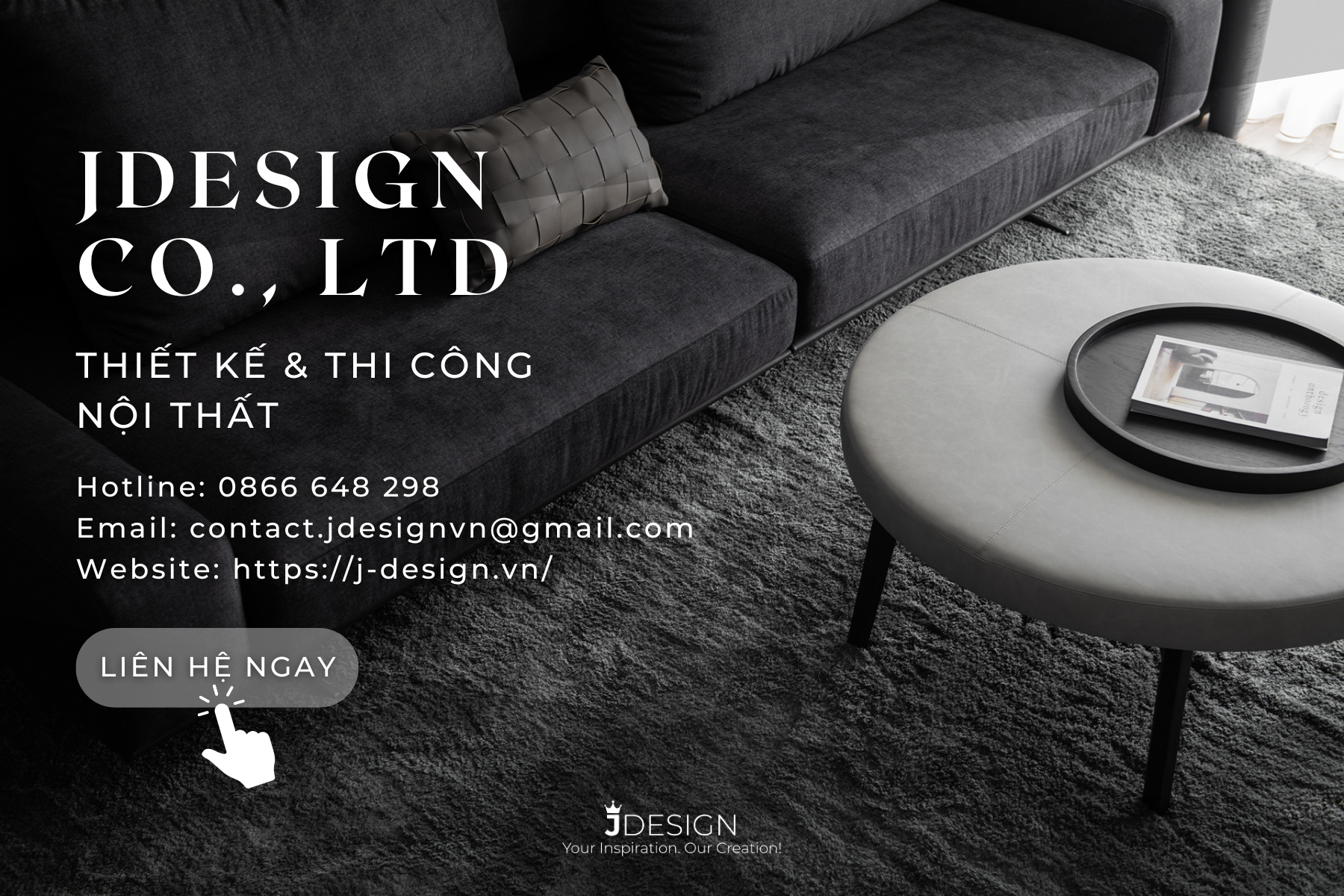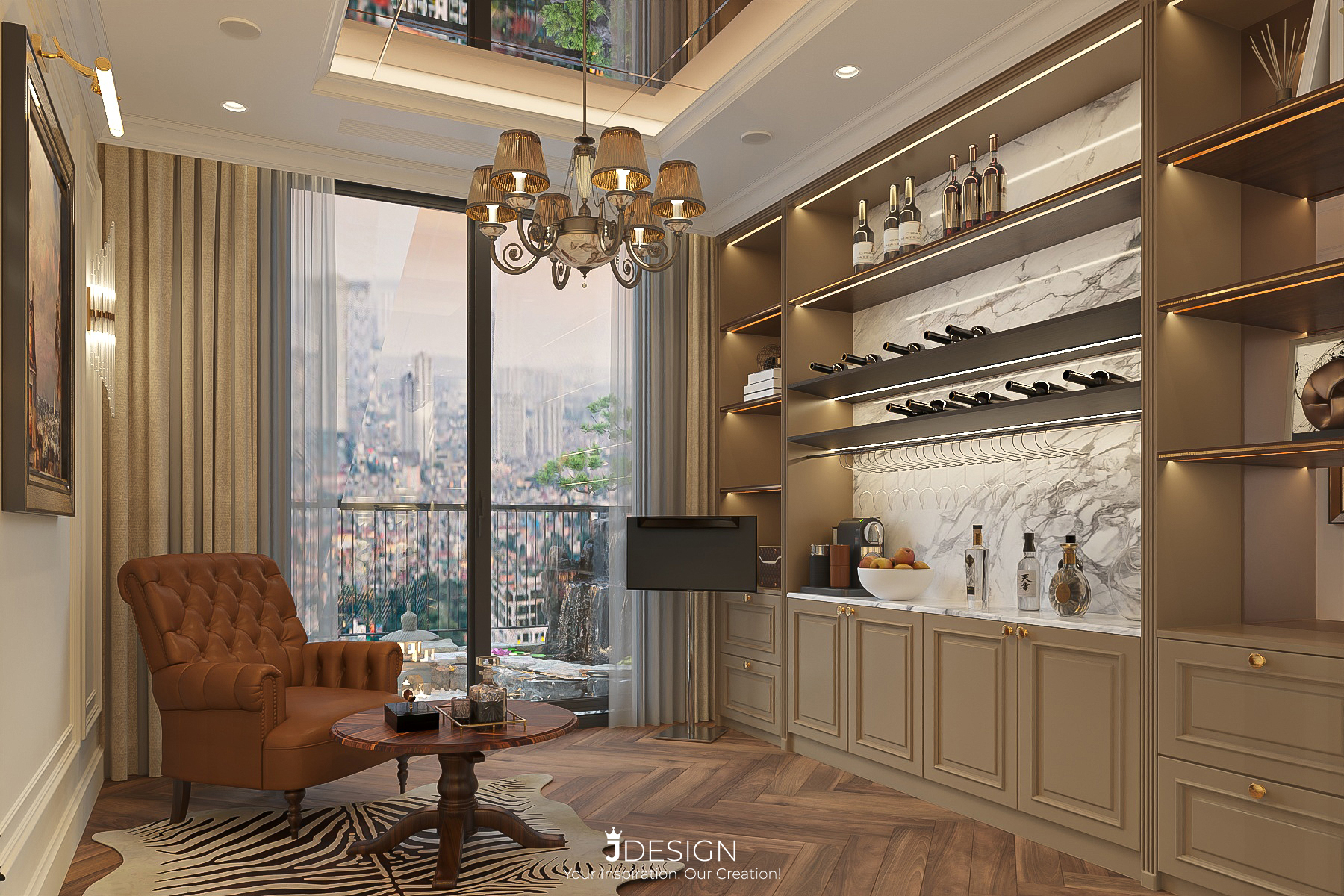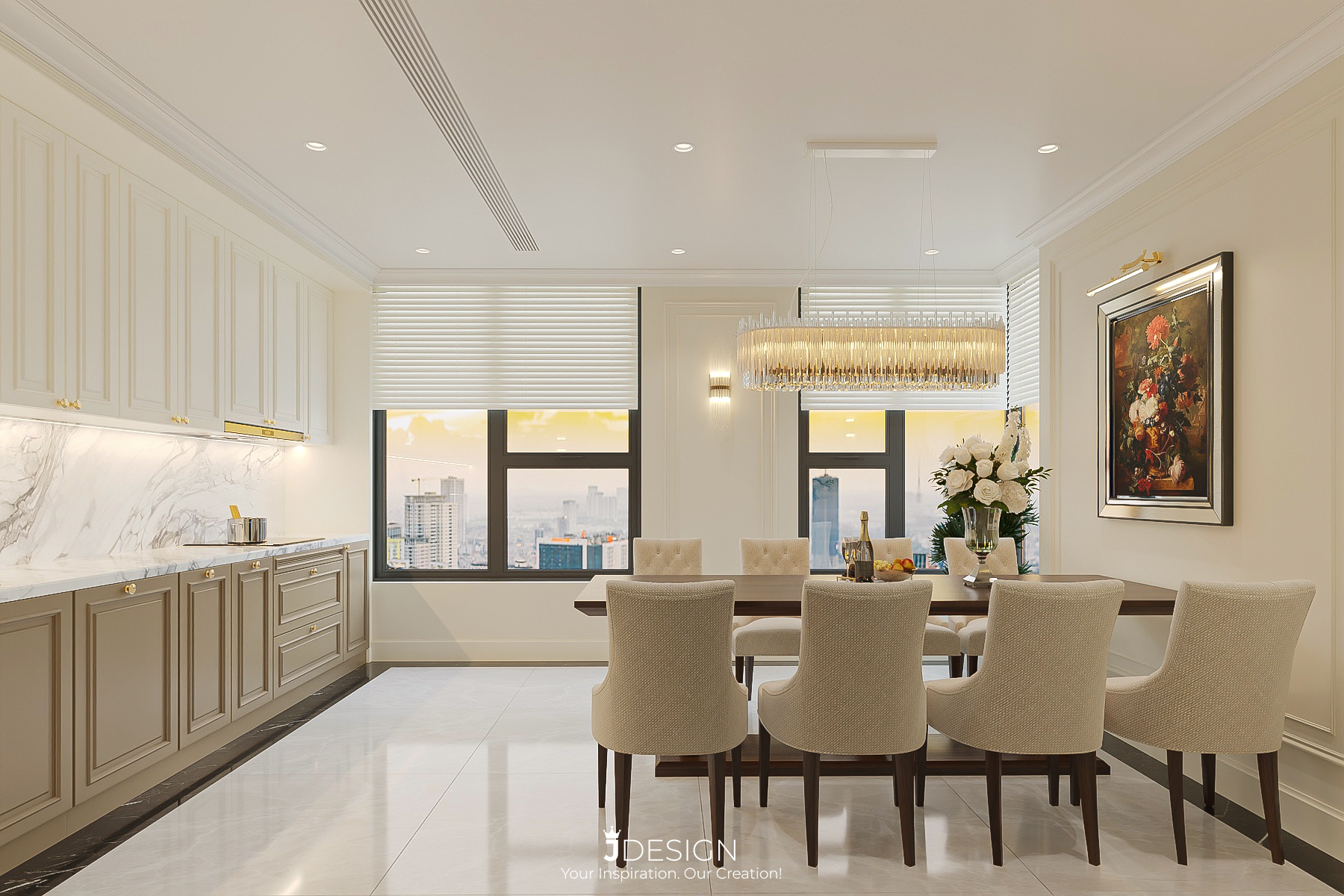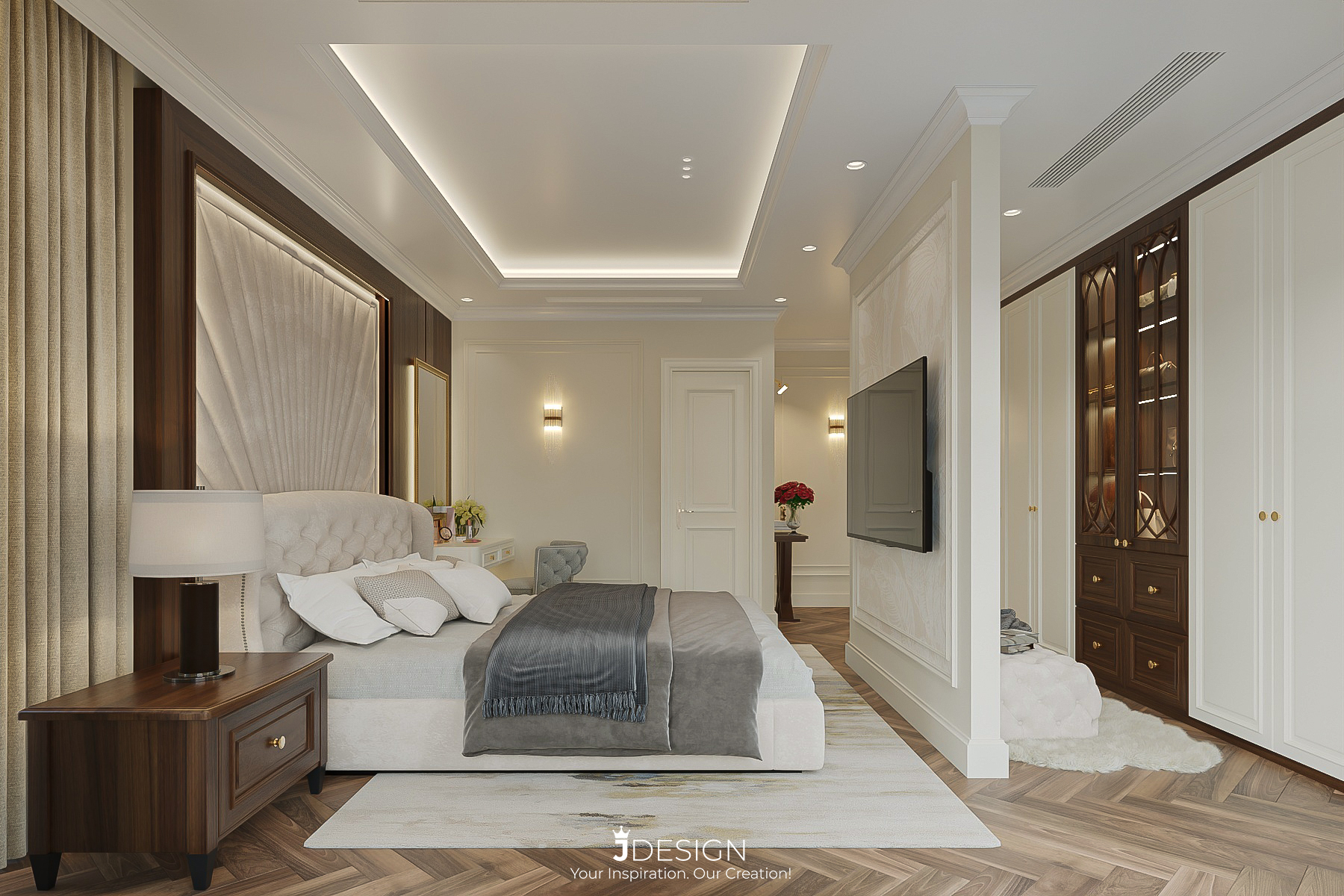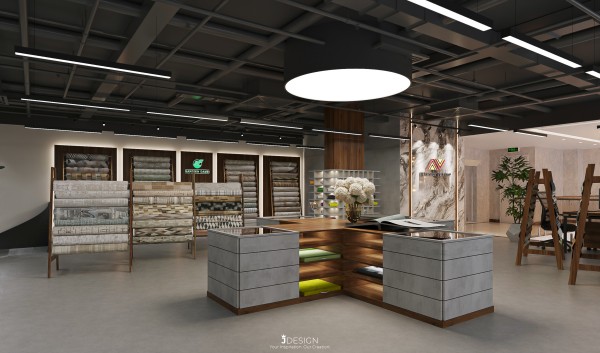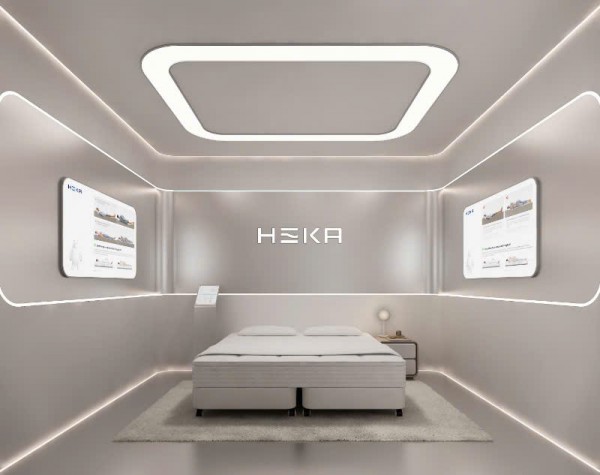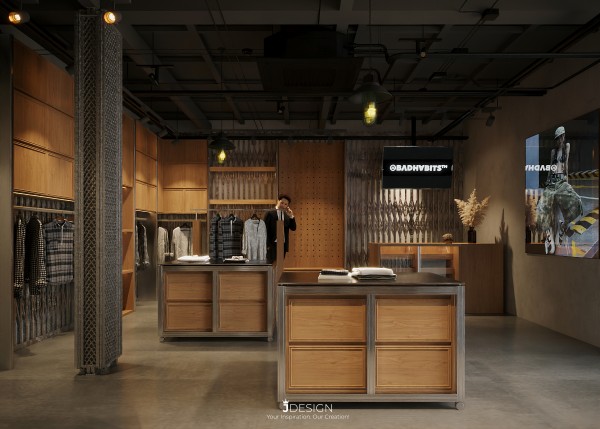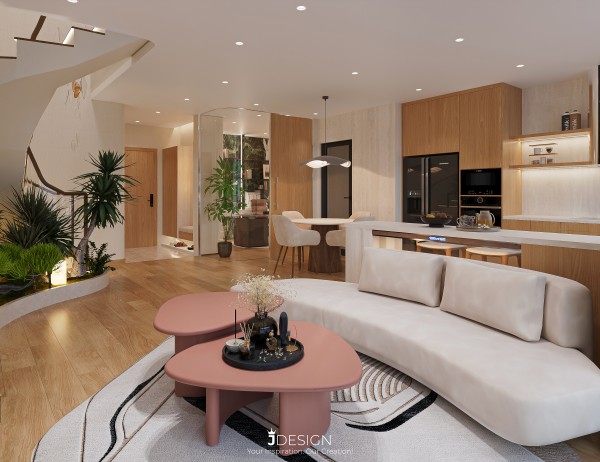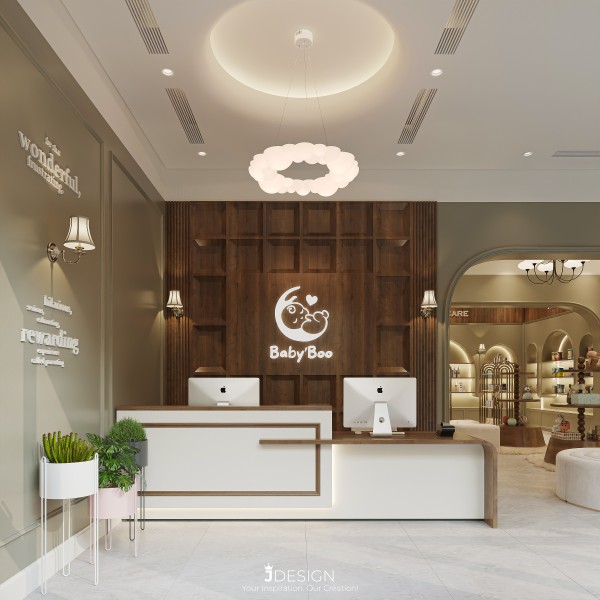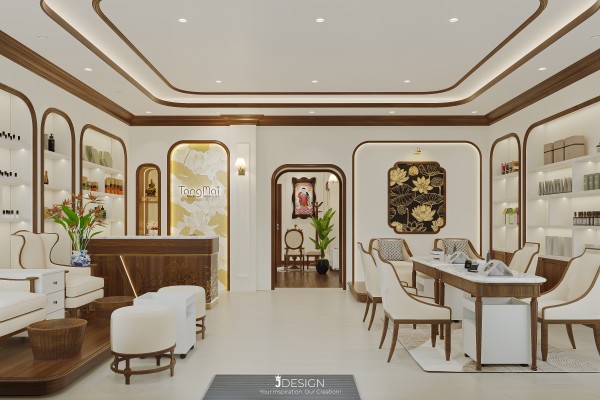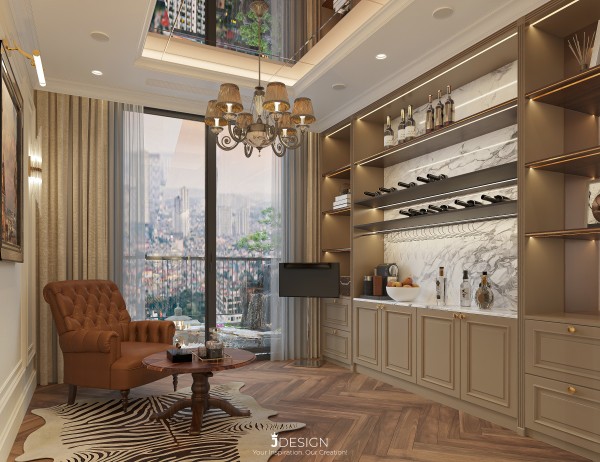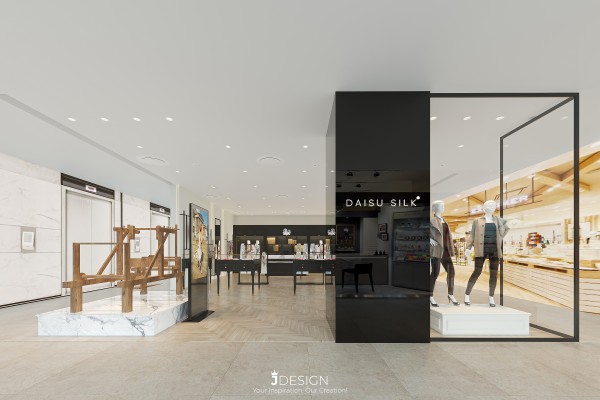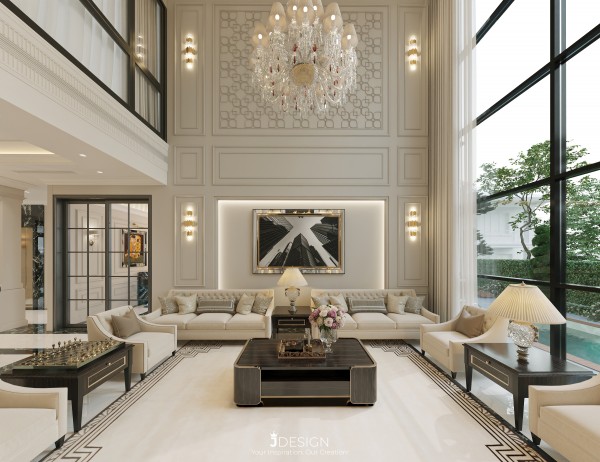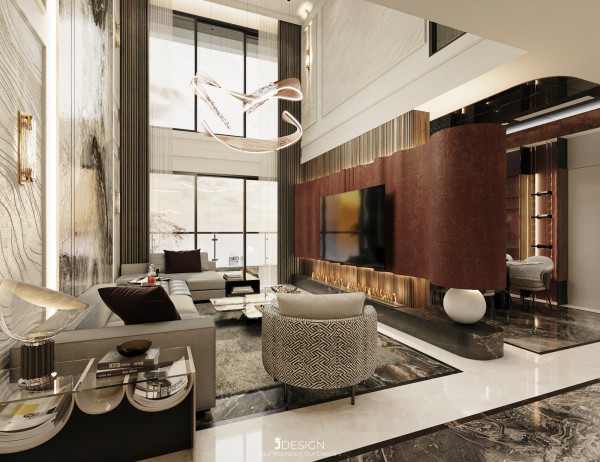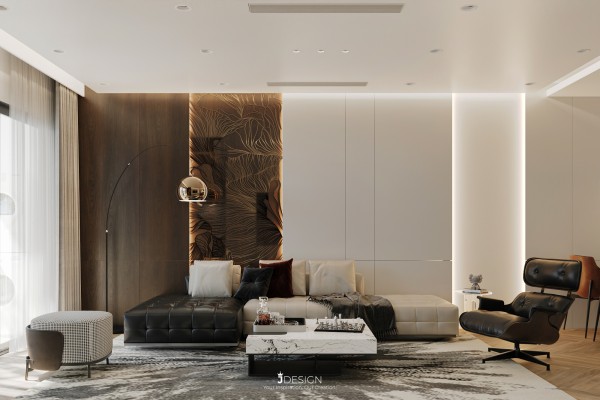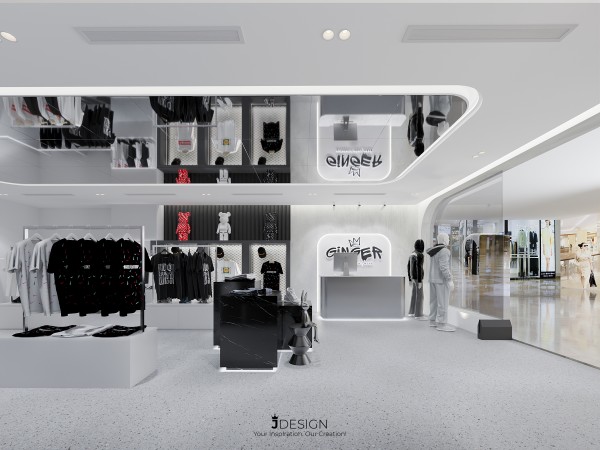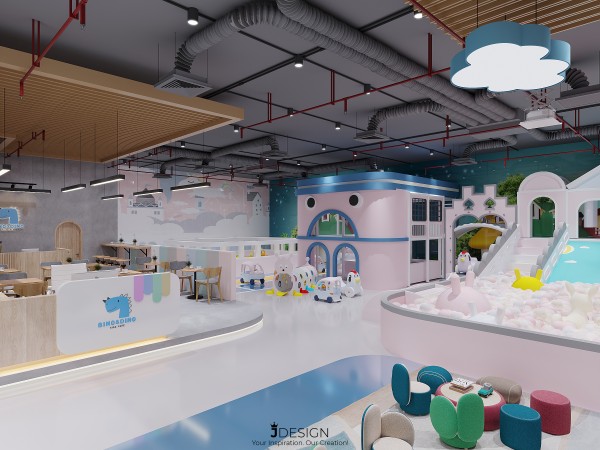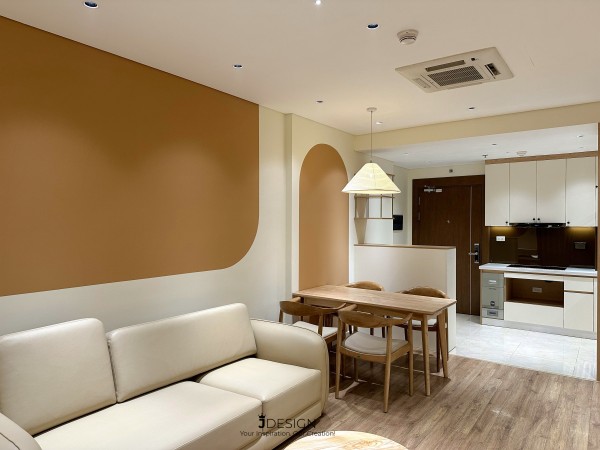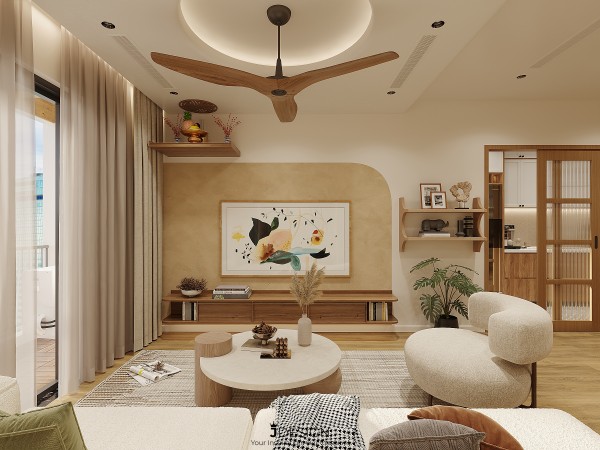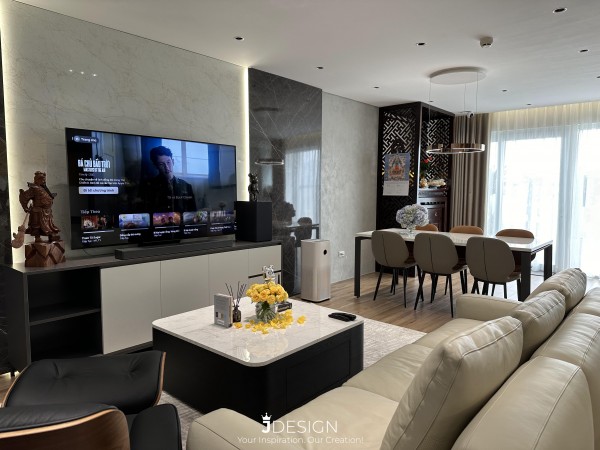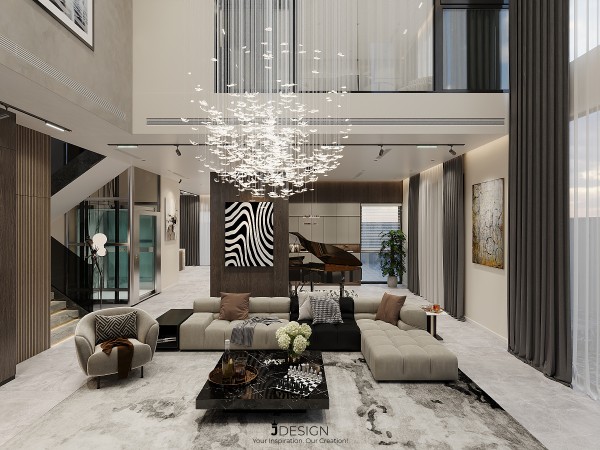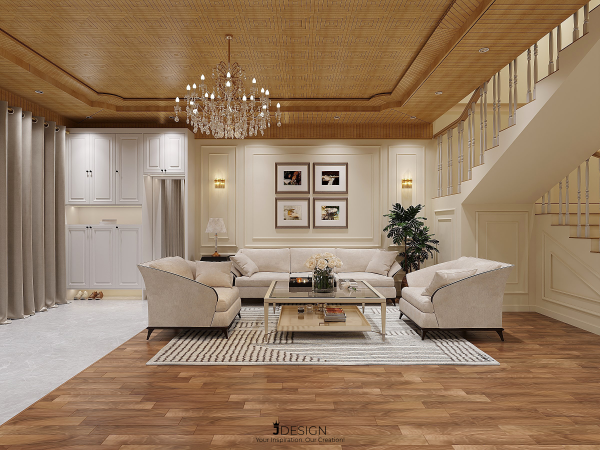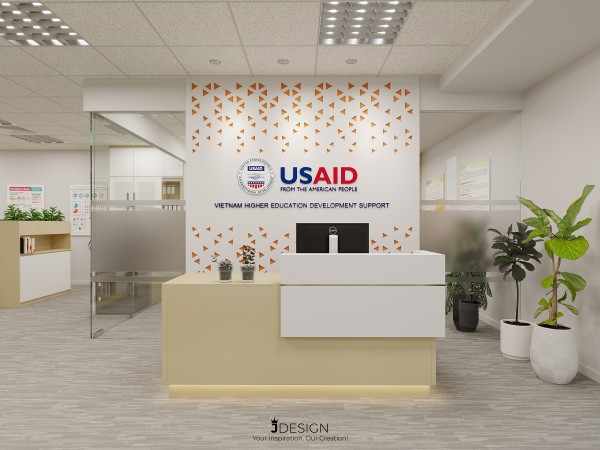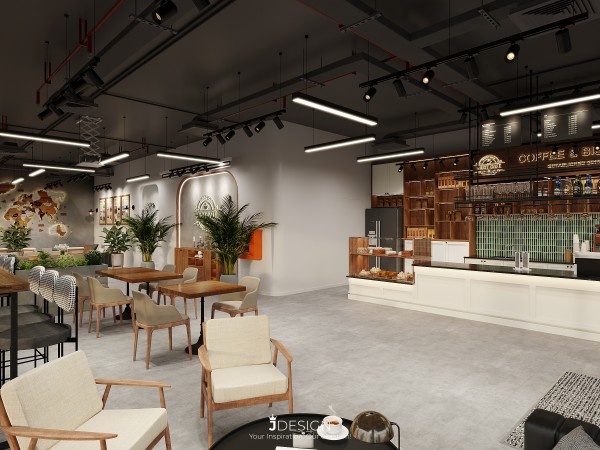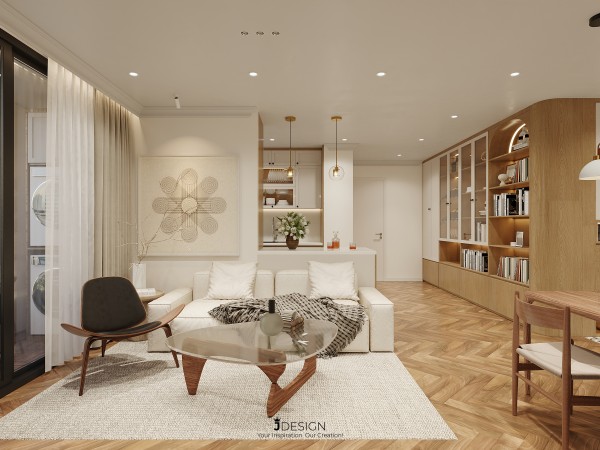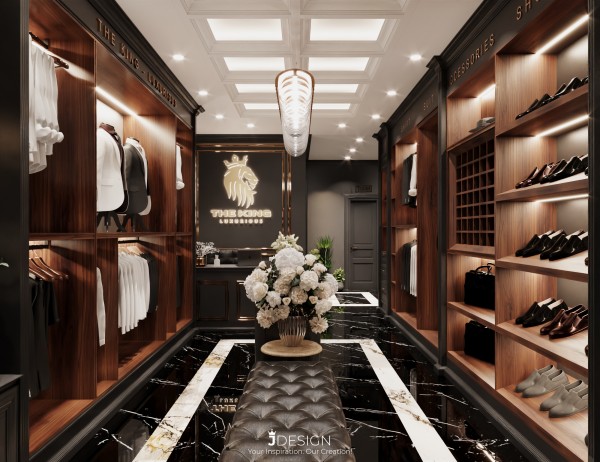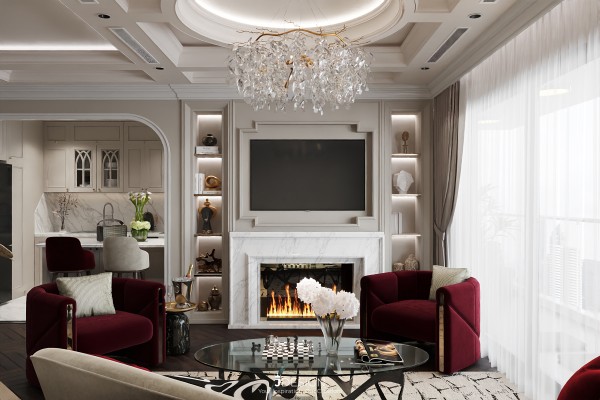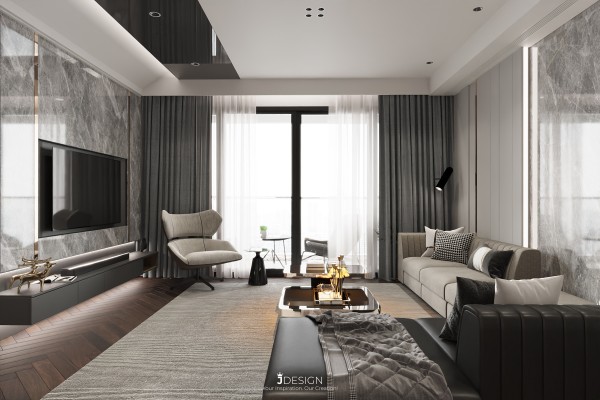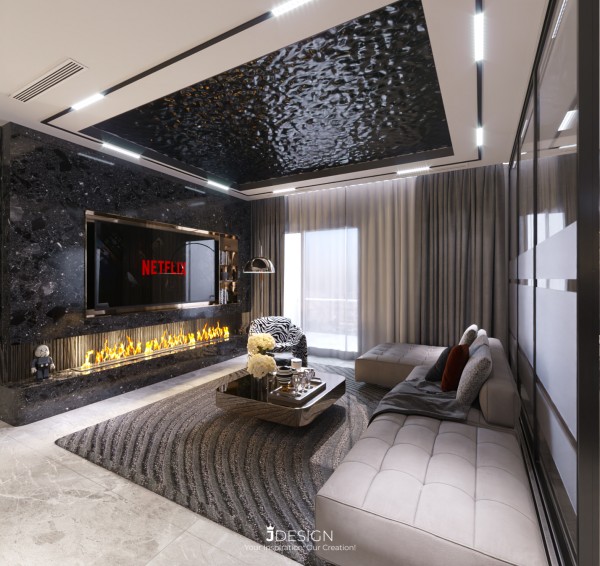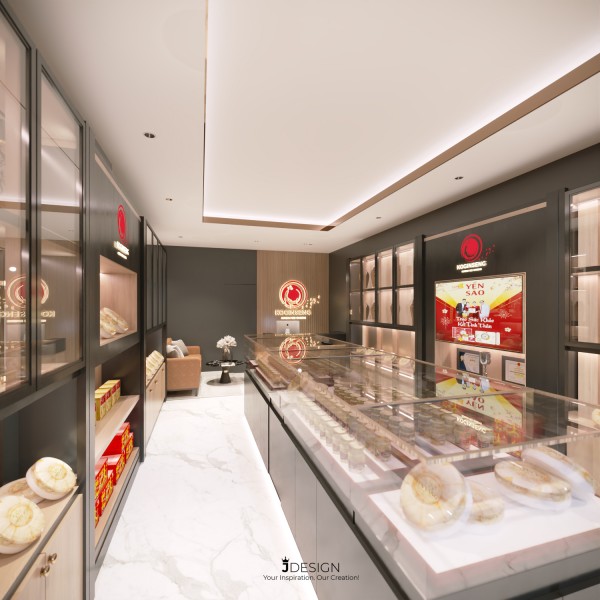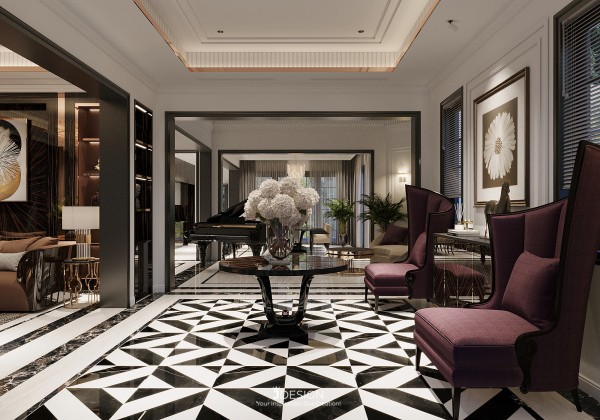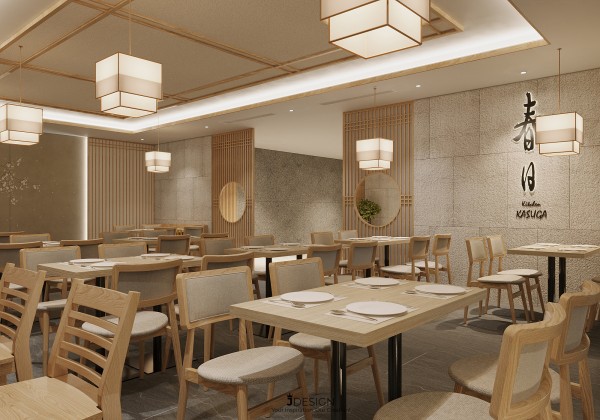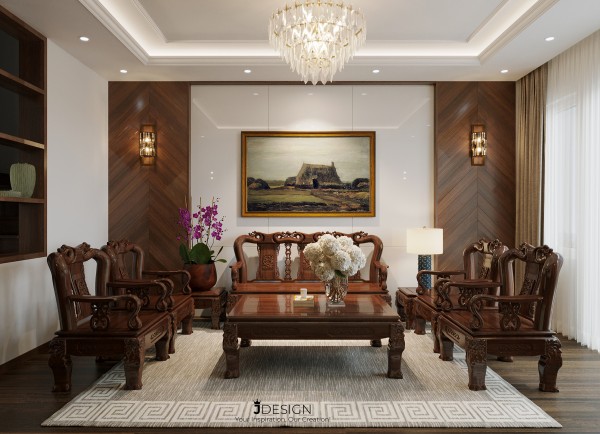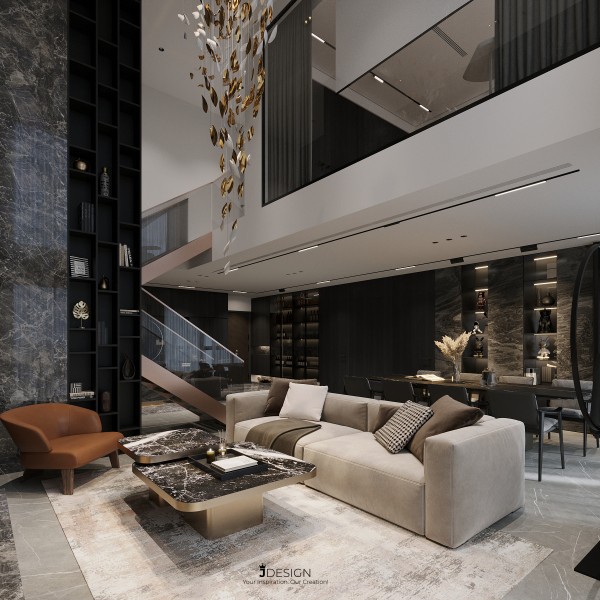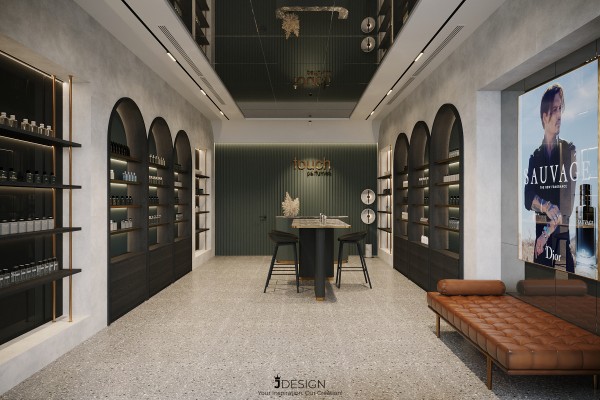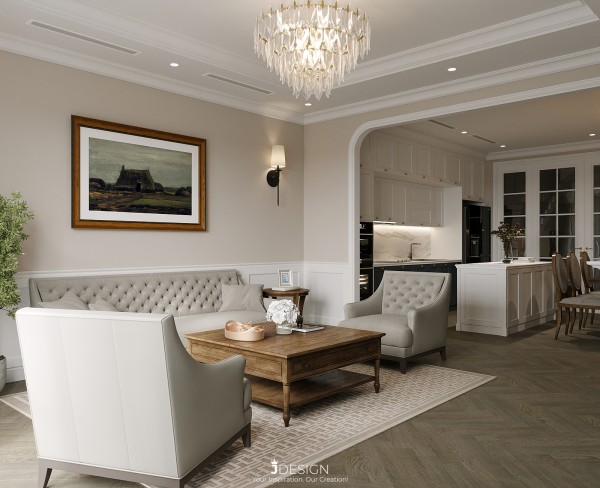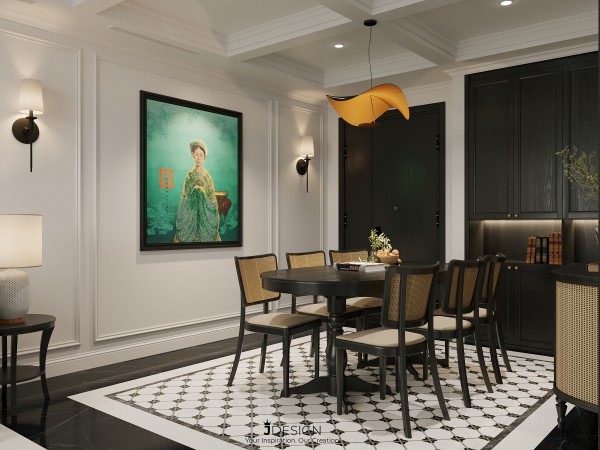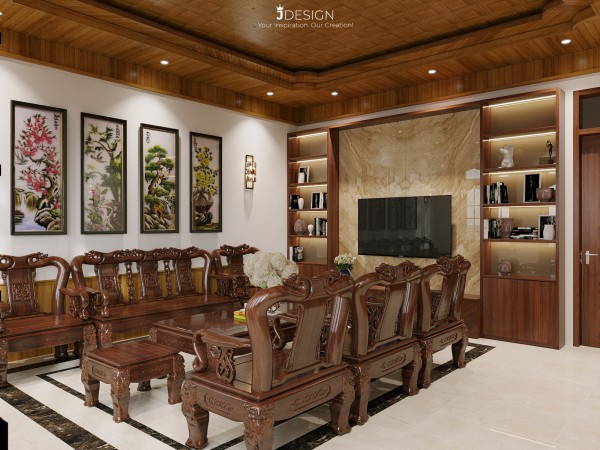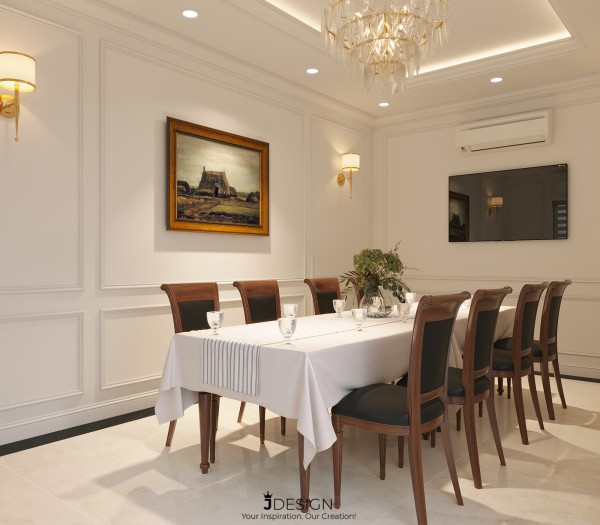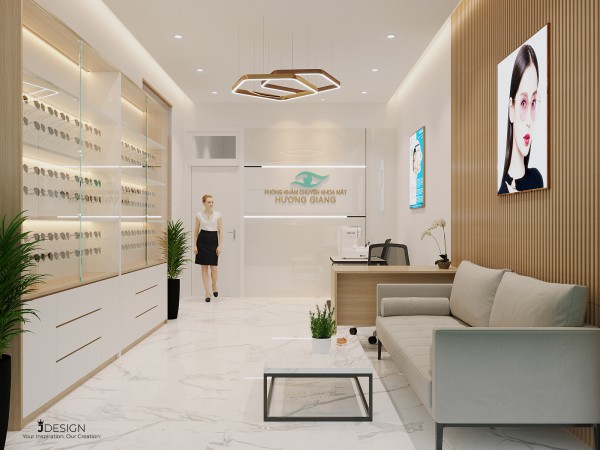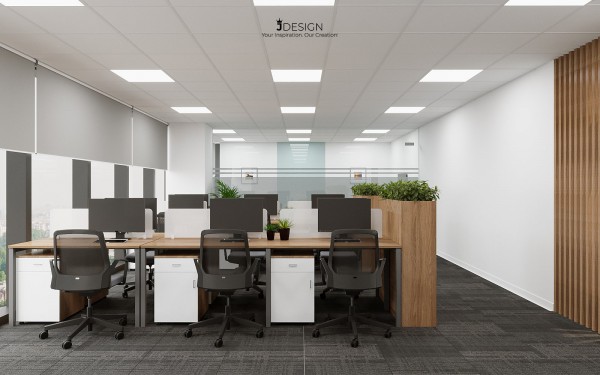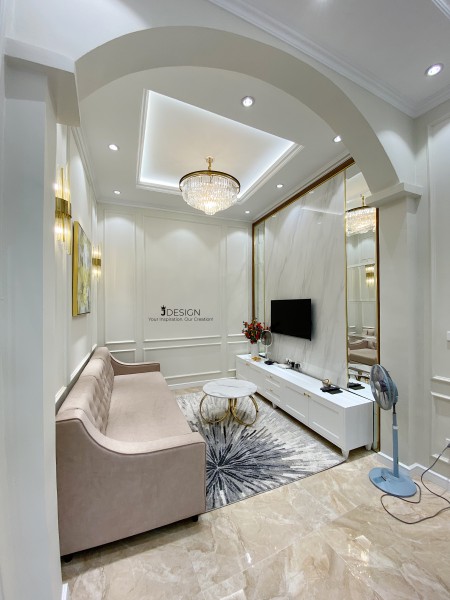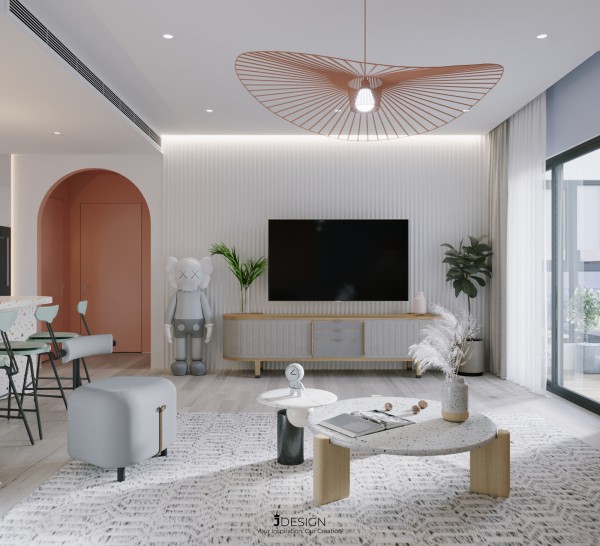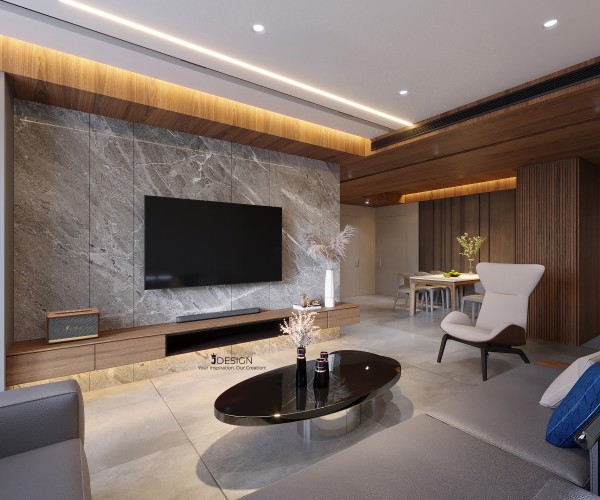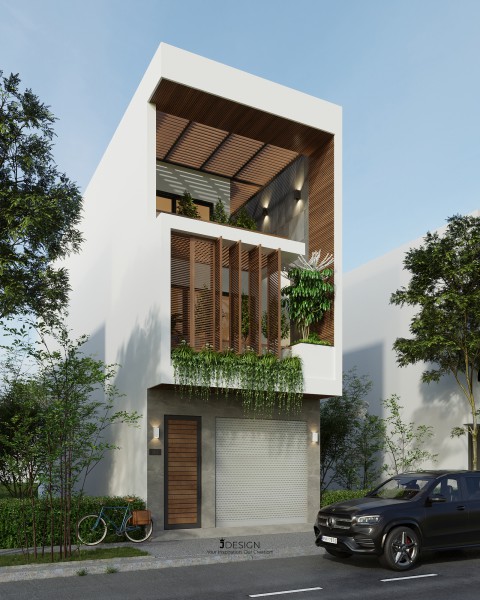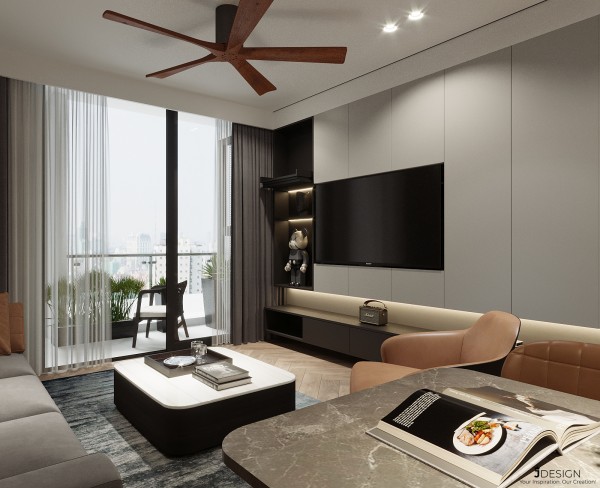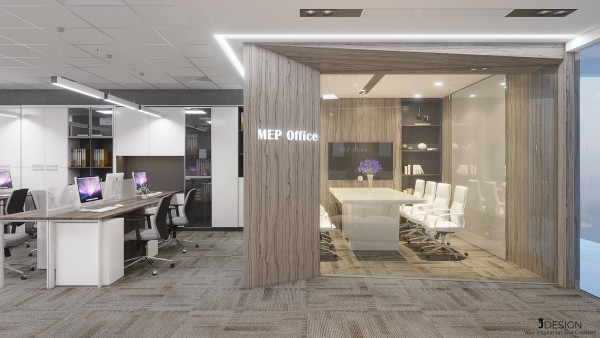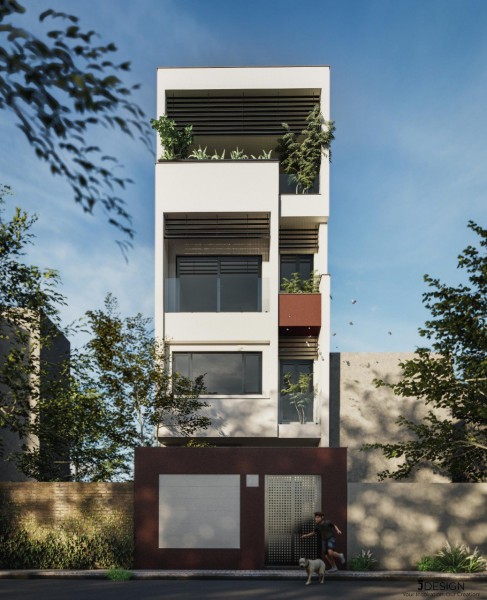ROLE AND APPLICATION OF PLASTER CEILINGS IN INTERIOR SPACES
Gypsum materials in general and gypsum ceilings in particular are no longer unfamiliar materials in the modern construction industry, especially in interior spaces. With high applicability, flexible and ready available materials, easy installation and construction, diverse in shaping and styling, and especially suitable for modern interior spaces. Gypsum ceilings are increasingly used more and more because of the benefits not only in terms of aesthetics but also as a great solution, becoming an indispensable trend in modern interior design.
With such high characteristics and applications, let's find out with JDesign Co., LTD in the article below about: "The role and application of Gypsum ceilings in interior space " !
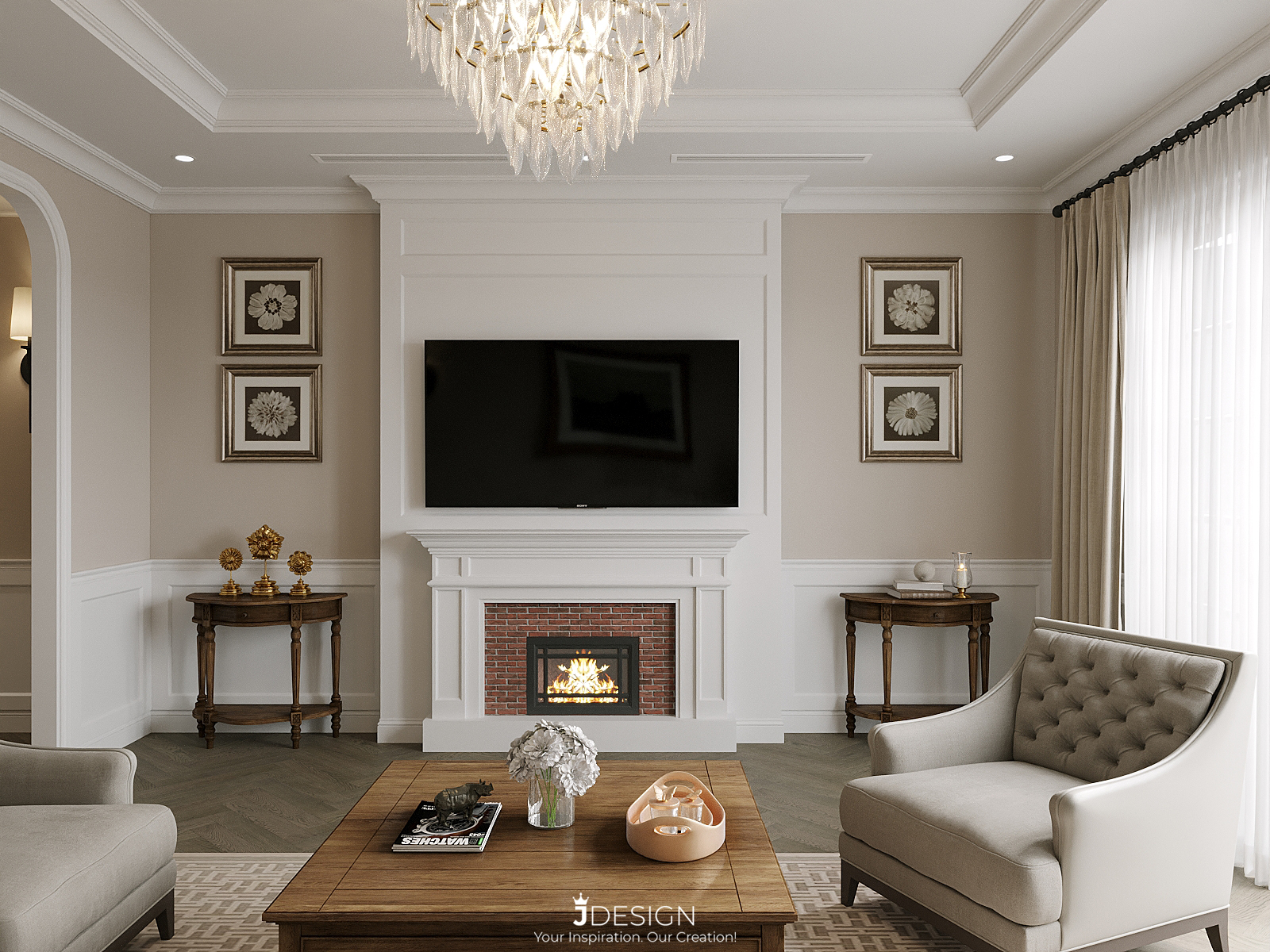
I. Definition:
Gypsum ceiling is one of the types of false ceilings that have the role of covering and shielding concrete ceilings and the accompanying system of existing concrete ceilings, commonly used in the construction industry, especially interior design. This ceiling system is made of gypsum panels, installed in conjunction with an iron or steel frame system, creating a solid ceiling system, ensuring aesthetic factors and load-bearing capacity.
II. Structure and Classification of Gypsum Ceilings:
Gypsum ceiling system is mainly for interior constructions, including the following main components:
1. Gypsum board:
- Structure: Gypsum board is the main component, made from gypsum powder combined with kraft paper or specialized paper. Gypsum board can have different thicknesses (usually 9mm, 12mm, 15mm) depending on the requirements of the project and the customer.
- Classification: Gypsum boards are divided into 3 common types:
+ Standard gypsum board
+ Moisture/water resistant plasterboard
+ Fireproof plasterboard
+ Sound absorbing, antibacterial plasterboard

2. Skeleton :
- Structure: The frame is made of metal including main bars and secondary bars. This frame system plays a role in supporting the entire structure of the plaster ceiling system.
- Classification: Includes 2 main types: Floating Skeleton and Sunken Skeleton.
*) Floating skeleton:
A. Main bar:
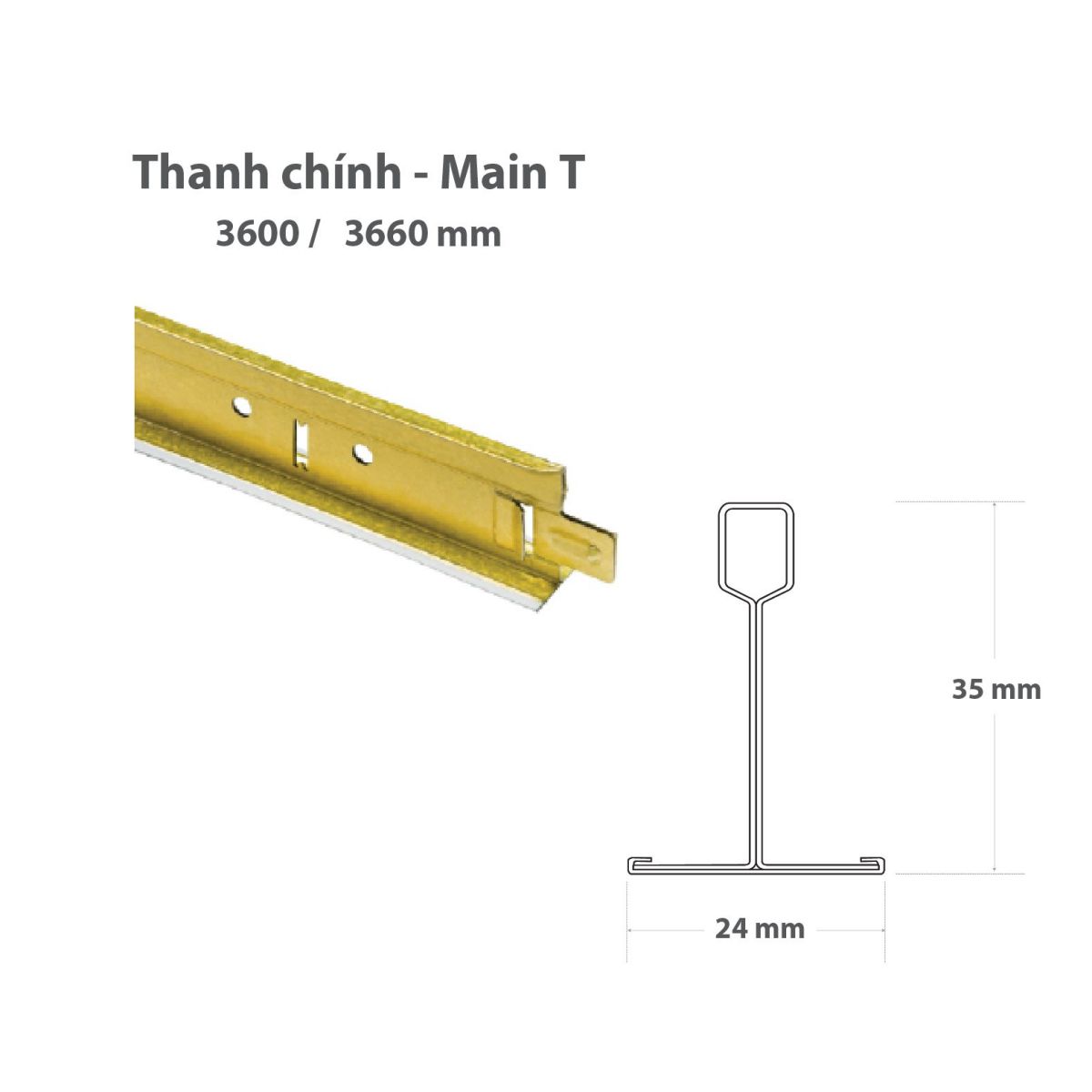
B. Sidebar:

C. Wall border:



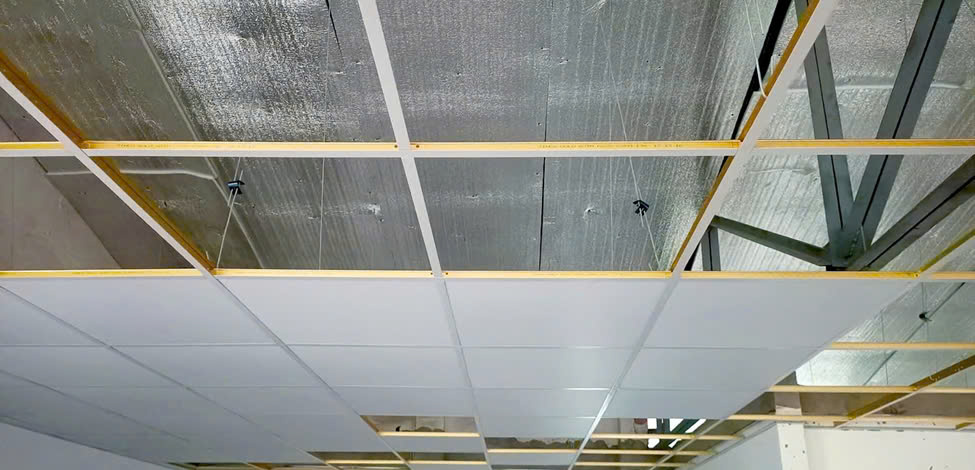
Installation structure of floating skeleton system
*) Sunken skeleton:
A. Main bar:
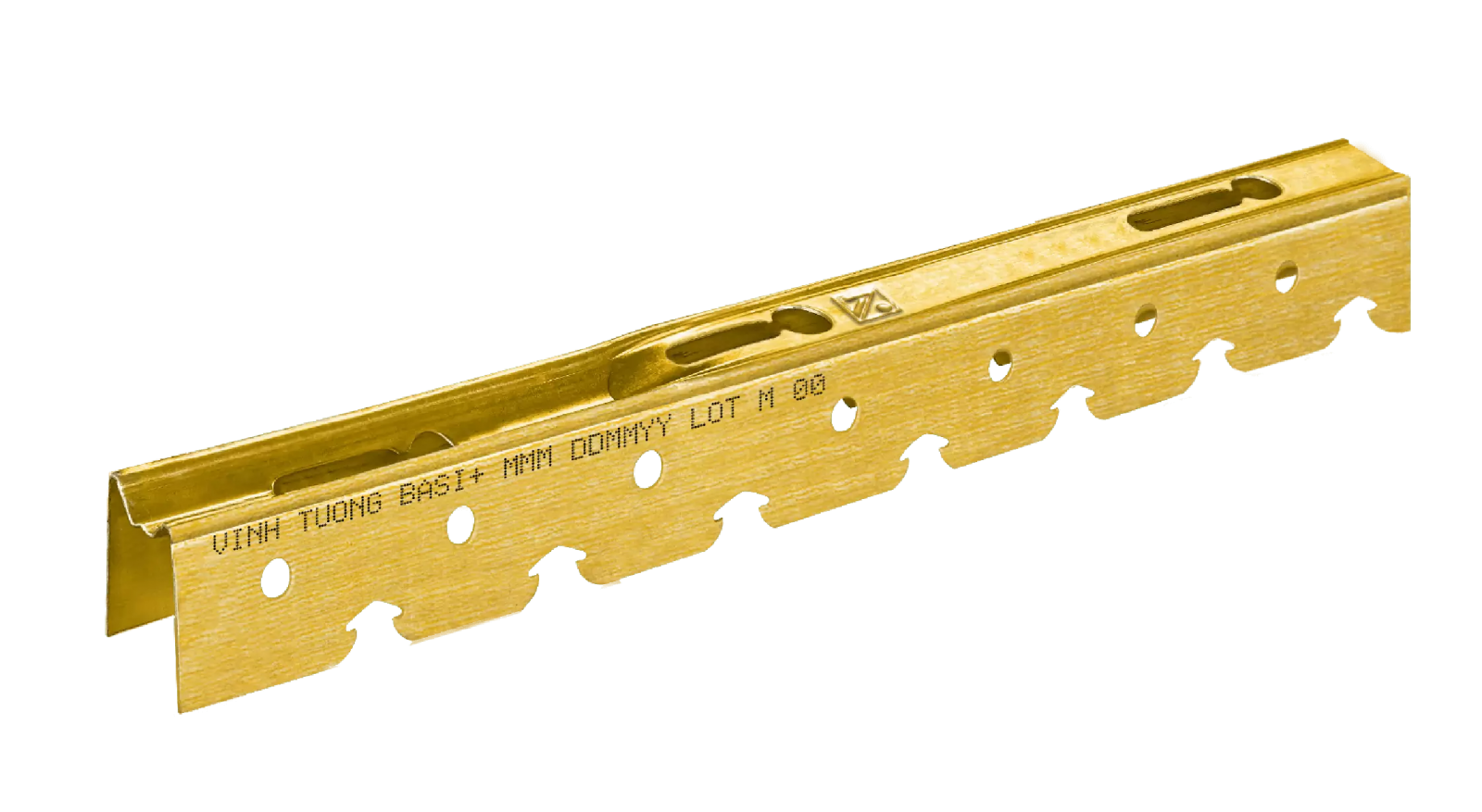
B. Sidebar:

C. Wall border:


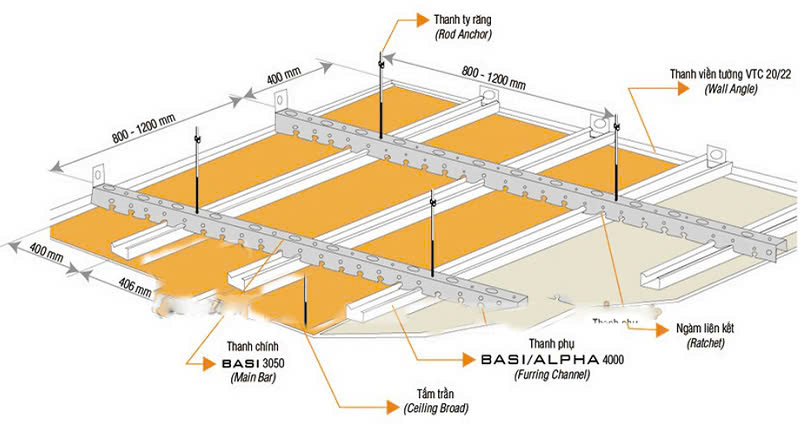
Installation connection structure of the sunken skeleton system
3. Finishing materials and accessories:
*) Finishing materials
- Black screws, fishtail screws, steel nails
- Steel anchors, expansion bolts
- Hanging accessories (hangers, hooks, brackets, etc.)
- Mesh tape
- Joint treatment powder
- Ceiling inspection window

*) Accessories:
- Shadowline bar/ Ceiling slot molding
- Gypsum concealed molding
- Gypsum corner V-shaped brace
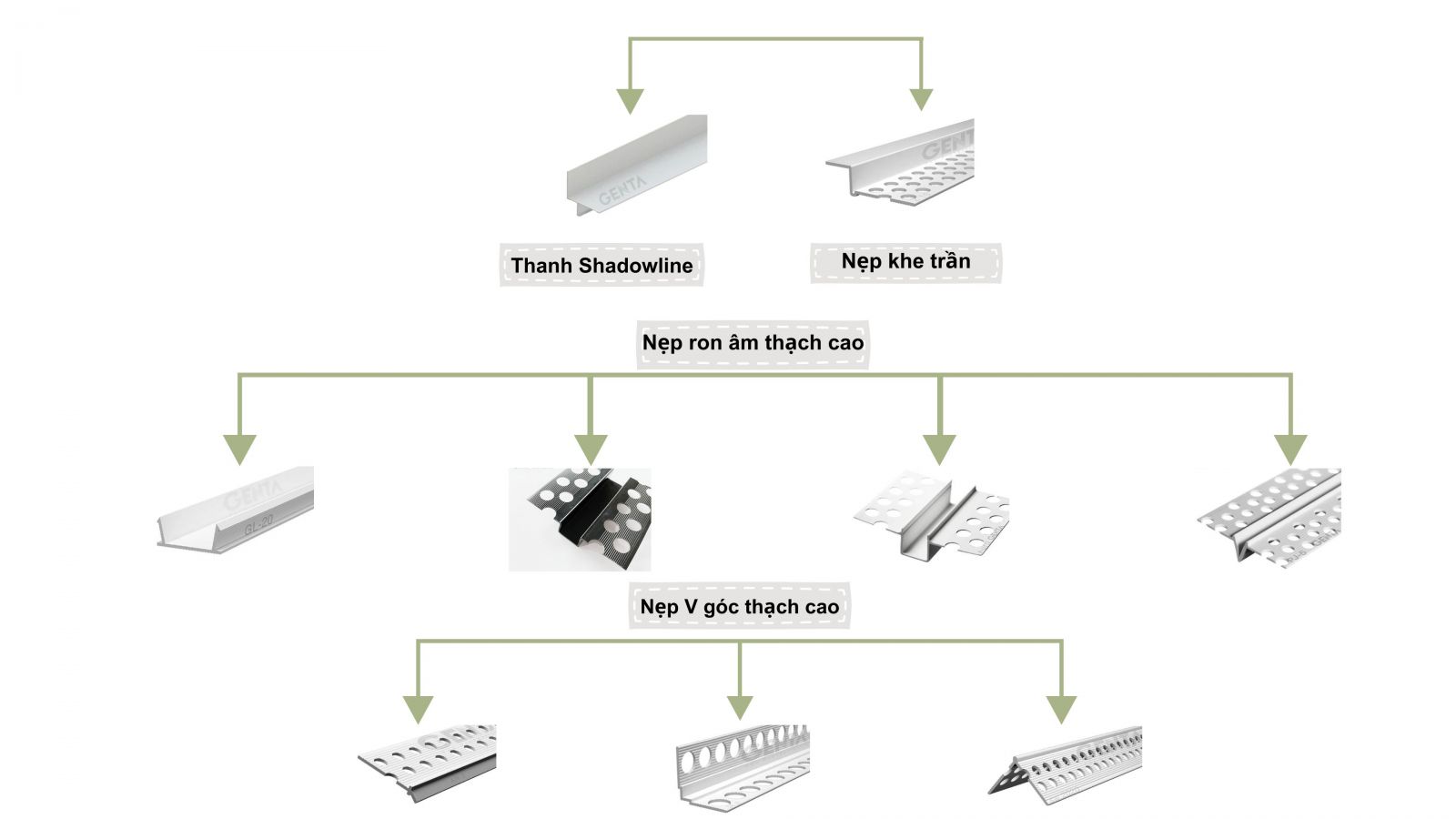
III. Standard plaster ceiling construction process:
The construction process of the Gypsum Ceiling System includes the following main steps:
Step 1:
- Prepare tools: Tape measure, laser machine, water level, plaster cutter, saw, drill, hammer, drill bit.
Step 2:
- Use a laser to determine the location to install the wall trim.
- Mark the suspension point locations with ink for the suspension rods to be placed on the existing ceiling structure.
- Use a specialized drill to drill into the concrete ceiling structure at previously marked locations.
Step 3 :
- Attach the steel anchor and 2-hole patch to the existing drilled hole.
- Create a set of hanging rods, then attach the hanger sets to the positions where the 2-hole Pat has been installed.
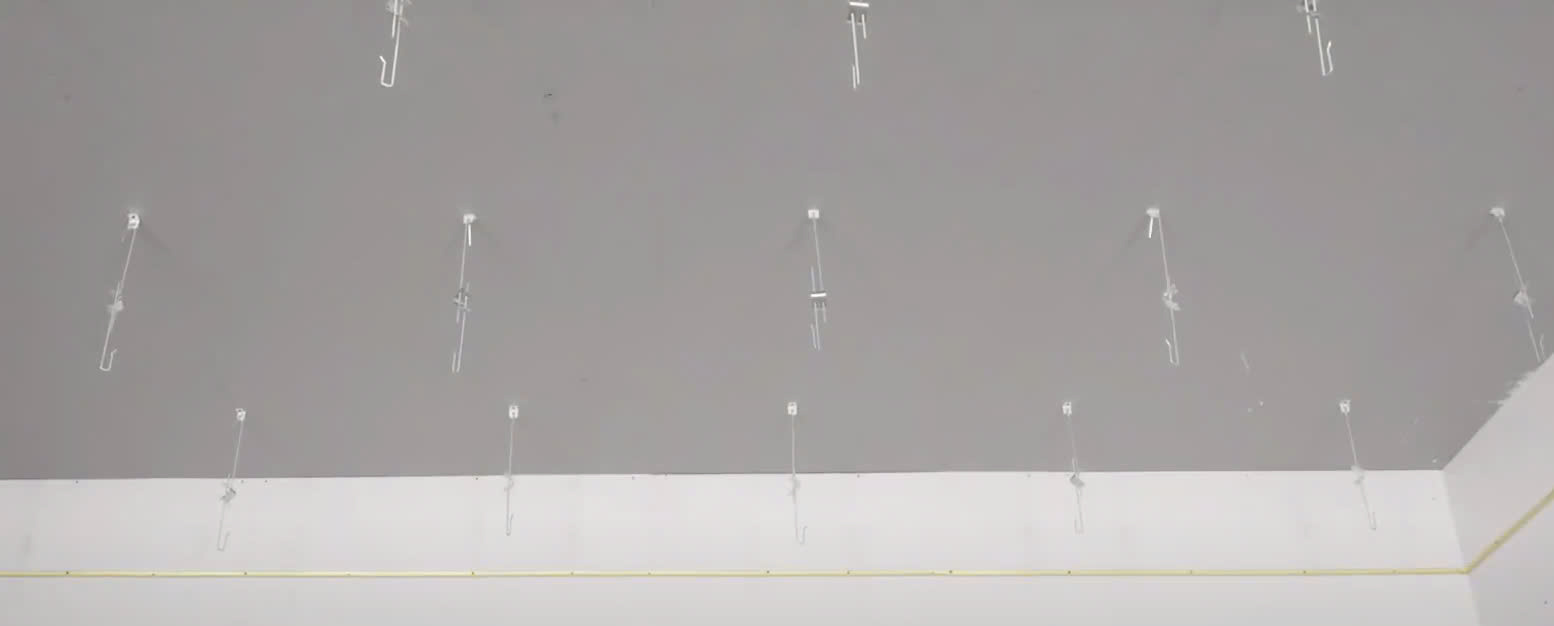
Step 4:
- Install the main and secondary bars into the previously installed suspension rods.
- Install the plasterboard on the ceiling , then screw the plasterboard in place.
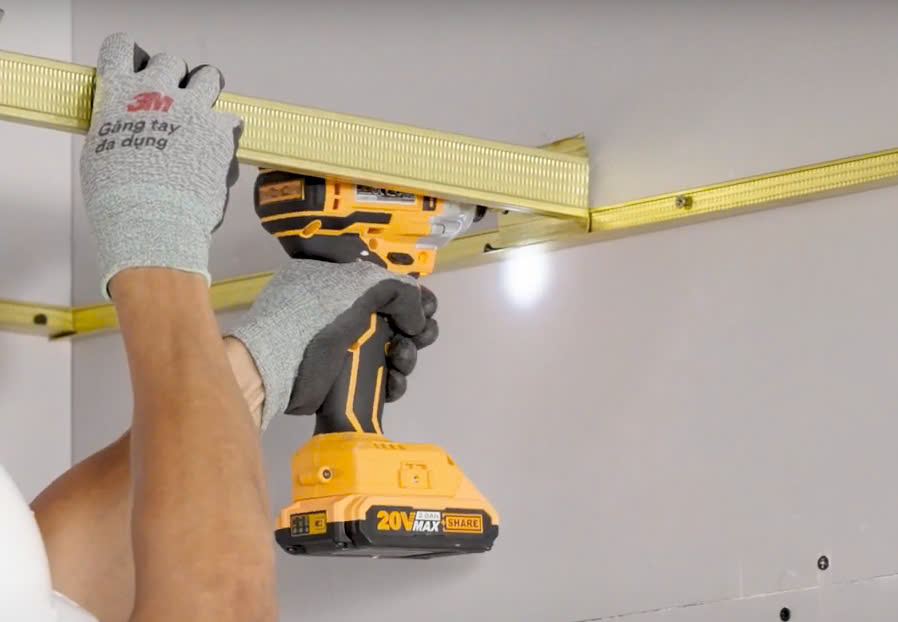
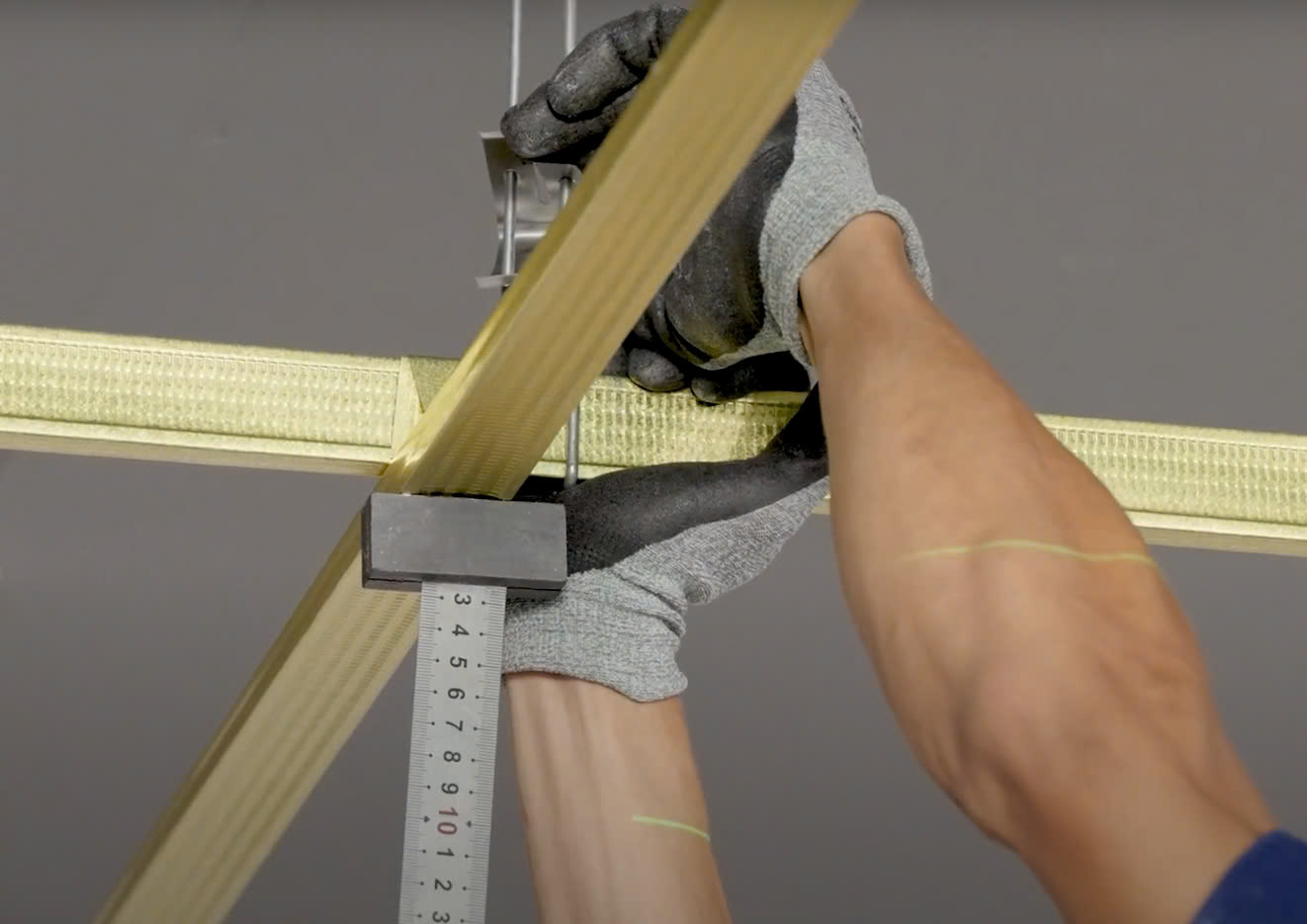
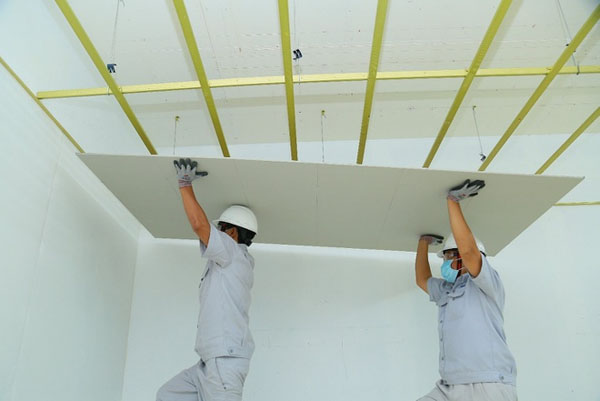
Step 5:
- Bonding and finishing , joints between plasterboard panels are treated with putty, covered with mastic to create a smooth, seamless surface.
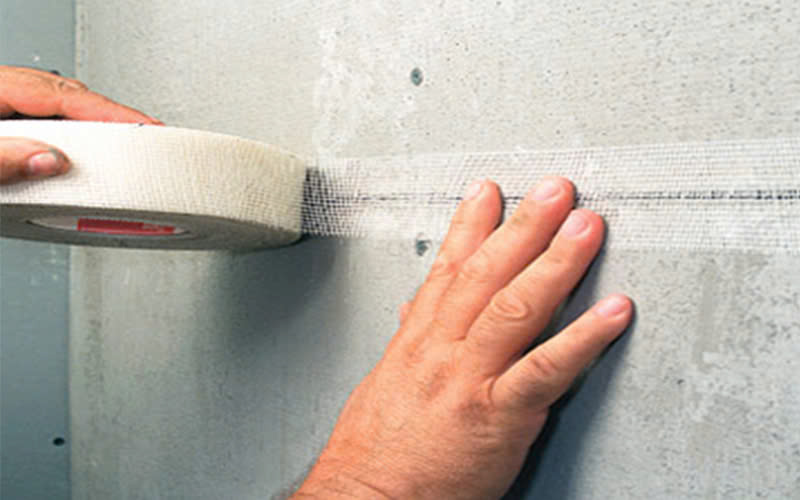

Step 6:
- Finish the surface of the plaster ceiling with putty, wait for it to dry, sand it and roll the finishing paint with 1 primer and 2 coats of paint.
IV. Advantages and Disadvantages of Gypsum Ceiling:
1. Advantages:
- Easy to construct and install: Construction is faster and easier than traditional ceilings.
- High aesthetics: Gypsum ceilings can be flexibly shaped, meeting diverse aesthetic requirements of the space.
- Fireproof: Fireproof gypsum board has good fireproof properties, helping to increase the safety level of the project.
- Soundproofing and insulation: Some types of gypsum ceilings have good soundproofing ability, helping to limit noise from outside. In addition, it also has heat insulation ability, keeping the interior space cool in the summer and warm in the winter.
- Easy maintenance: If repair or replacement is needed, the plasterboard panels can be removed and replaced easily.
- Reduced costs: Compared to other types of ceilings such as wooden ceilings or concrete ceilings, plasterboard ceilings have lower construction costs.
2. Disadvantages:
- Poor water resistance: If moisture-resistant plasterboard is not used, the plaster ceiling can be affected by moisture, leading to damage and peeling.
- Easily broken or cracked: Gypsum ceilings can break or crack if subjected to strong impact, because gypsum is highly brittle.
- Regular maintenance required: Although easy to maintain, plasterboard ceilings need to be checked regularly to detect problems such as cracks and breaks.
V. Features and Applications of Gypsum Ceilings in Interior Design:
Gypsum ceilings in Interior Design are becoming more and more popular in the market because of the aesthetics and flexibility that this material brings.
A. Classification by shape:
1. Flat plaster ceiling :
- Features : Flat, simple ceiling system with few patterns.
- Application :
+ Often used in modern spaces, requiring simplicity and sophistication.
+ Suitable for large spaces, do not need too many highlights.
+ Easy to combine with lighting and ceiling sound systems.

Flat Gypsum Ceiling in Residential Interior Space

Flat Gypsum Ceiling in Commercial & Service Space
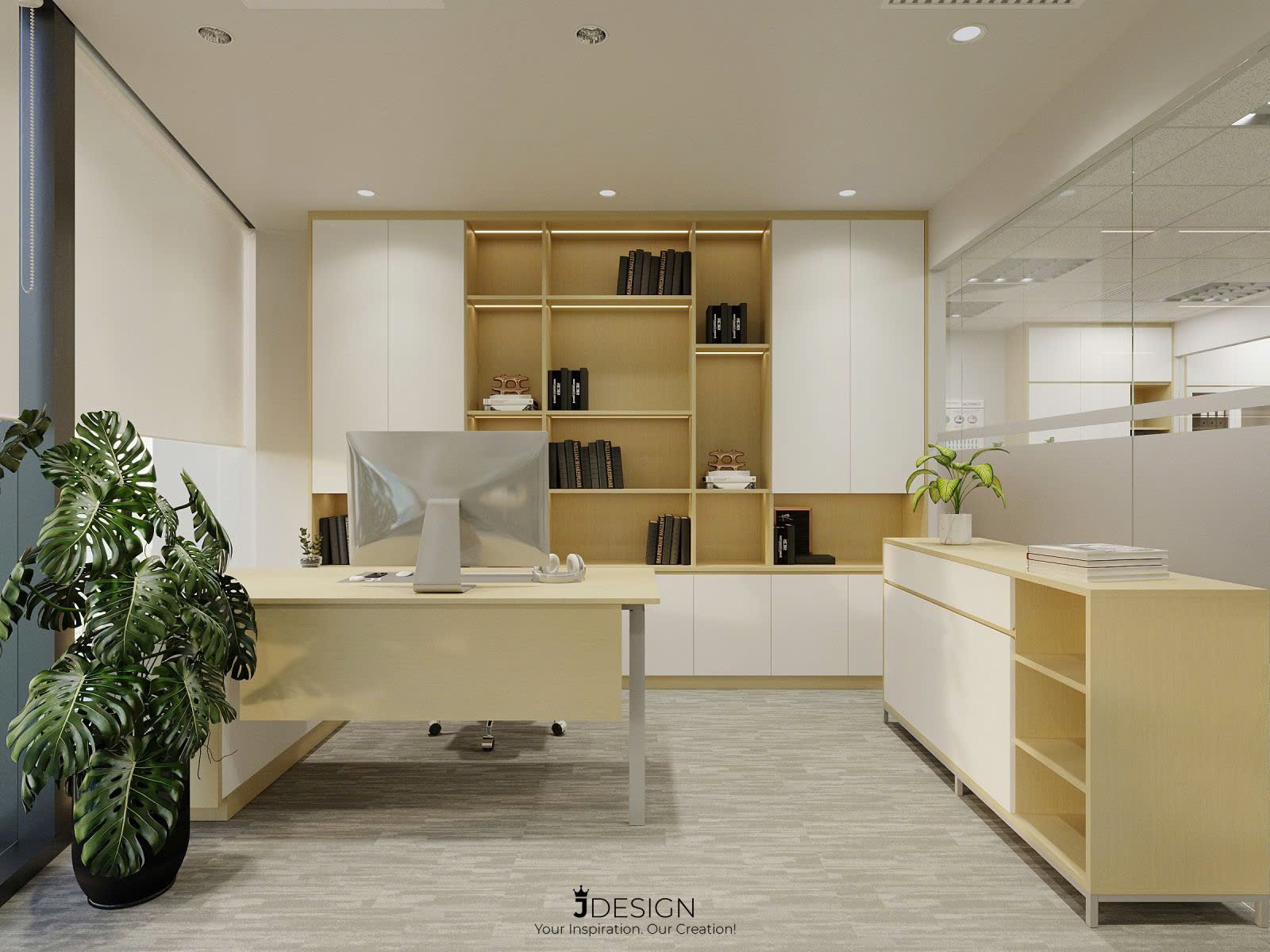
Flat Gypsum Ceiling in Office Interior Space
2. Gypsum ceiling with steps :
- Features : The ceiling is divided into many layers with different levels, creating an eye-catching effect and depth and impression.
- Application :
+ Creates a highlight for the space, helping to create depth and luxury.
+ Helps the space become high-class, attracting the eye from the stepped details.
+ Suitable for projects requiring high aesthetics, wanting to create an impressive space.
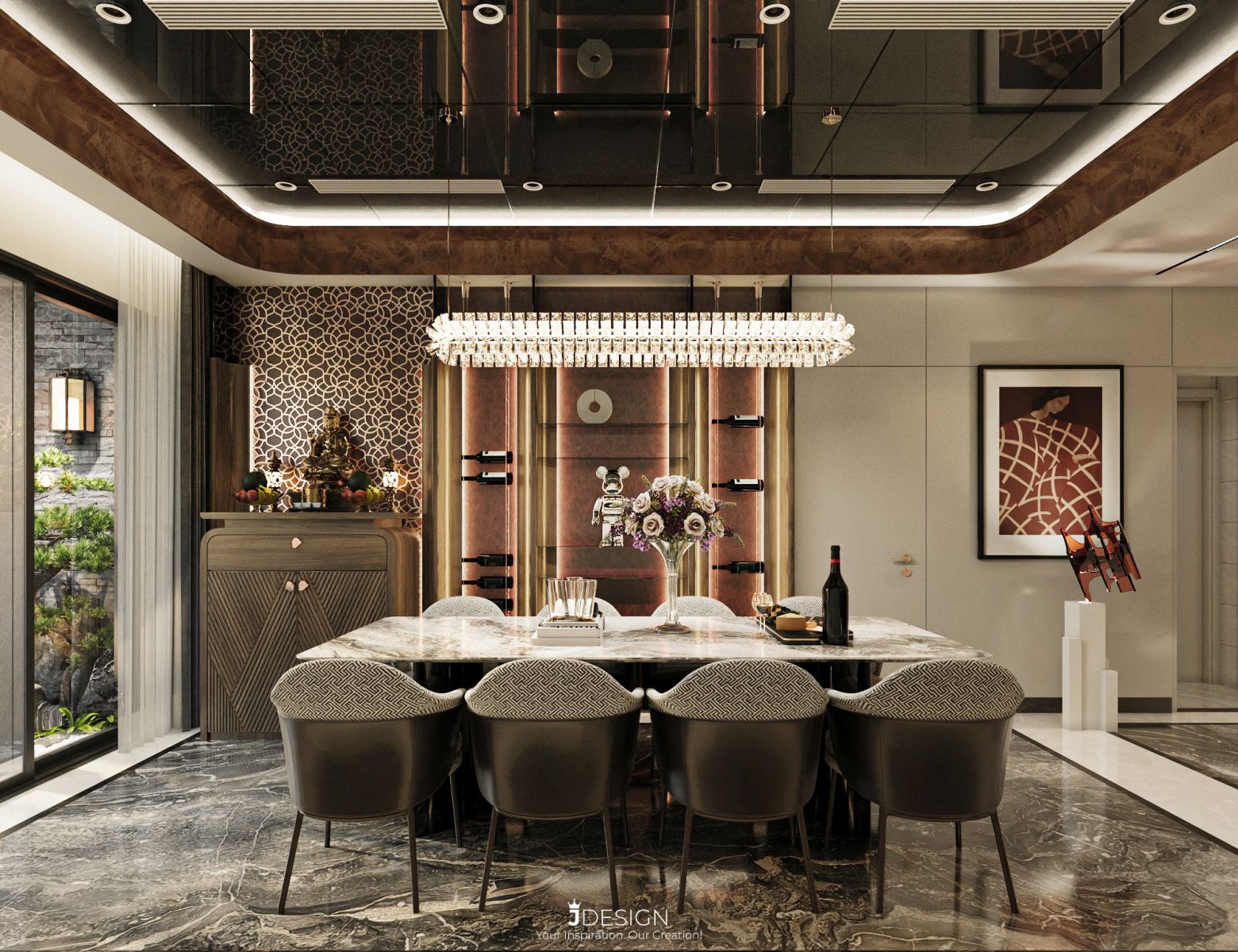
Gypsum ceiling with levels in the interior space of the house
.jpg)
Gypsum ceiling with steps in Commercial & Service Interior space
3. Plasterboard ceiling :
- Characteristics : This type of ceiling is assembled with plasterboard panels dropped into an existing frame, often used in office buildings or places that require easy maintenance of electrical and air conditioning systems.
- Application :
+ Create flexible and easy-to-maintain spaces.
+ Suitable for public works, easy to repair electrical and lighting systems.
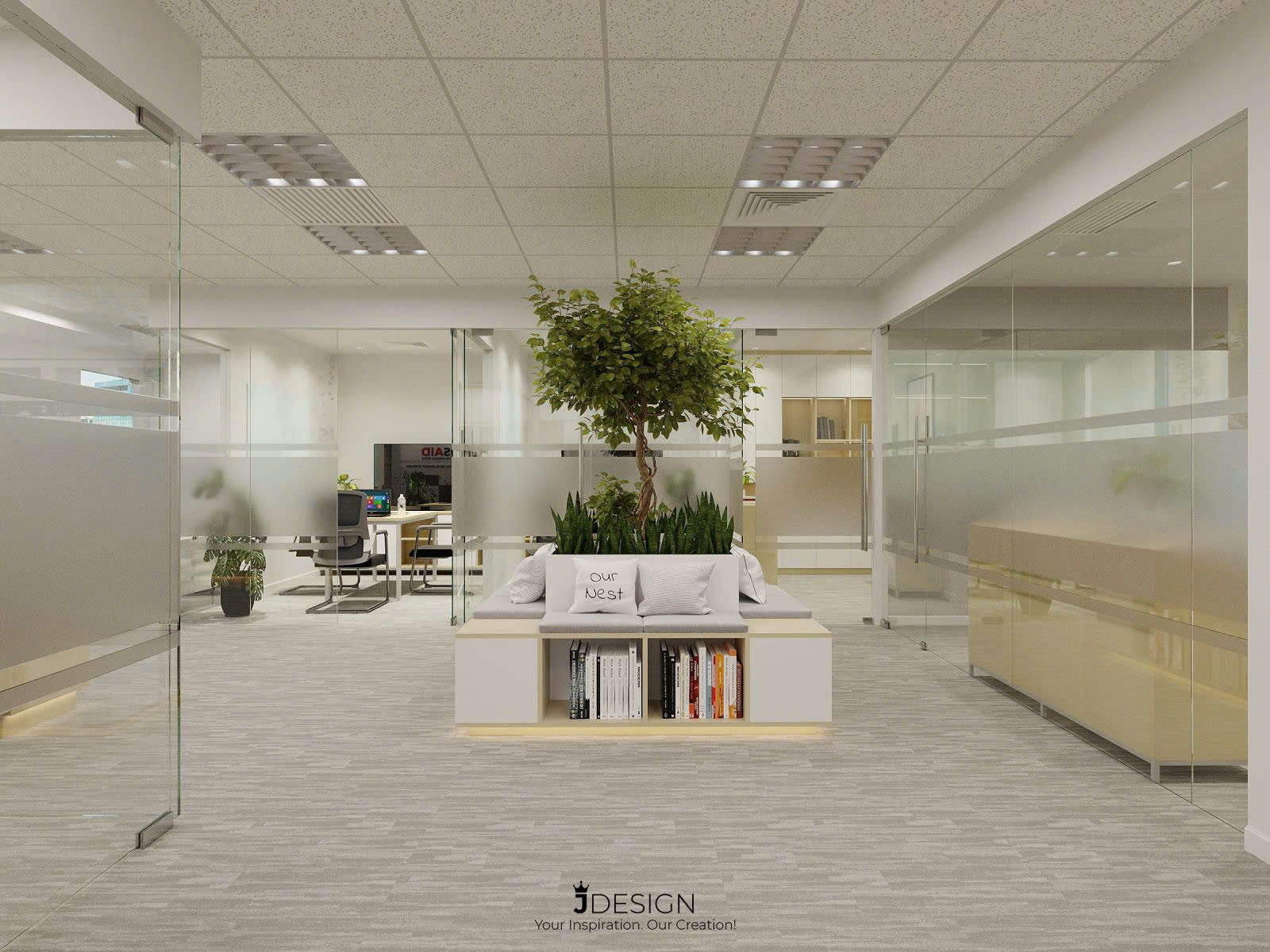
Plasterboard Ceiling Drop in Office Interior Space
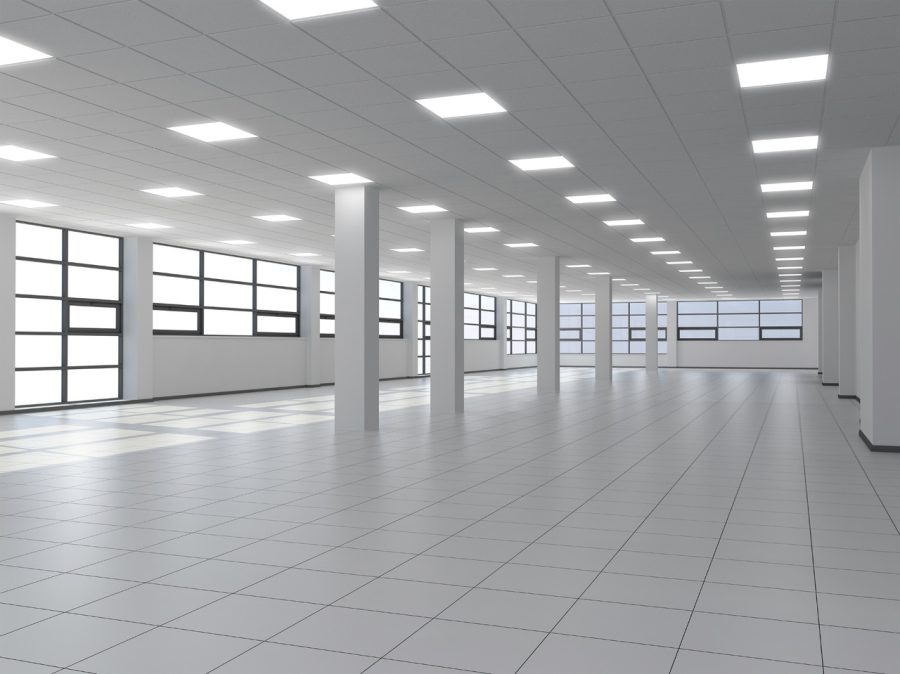
Gypsum ceiling in interior space of schools and hospitals
4. Decorative plaster ceiling
- Features: The ceiling is decorated with LED lights or curves, embossed borders or shaping details, helping to highlight the entire space.
- Application:
+ Create a luxurious, romantic space with gentle motifs or soft curves.
+ Increases the elegance of the space, suitable for projects requiring sophistication and high-end.
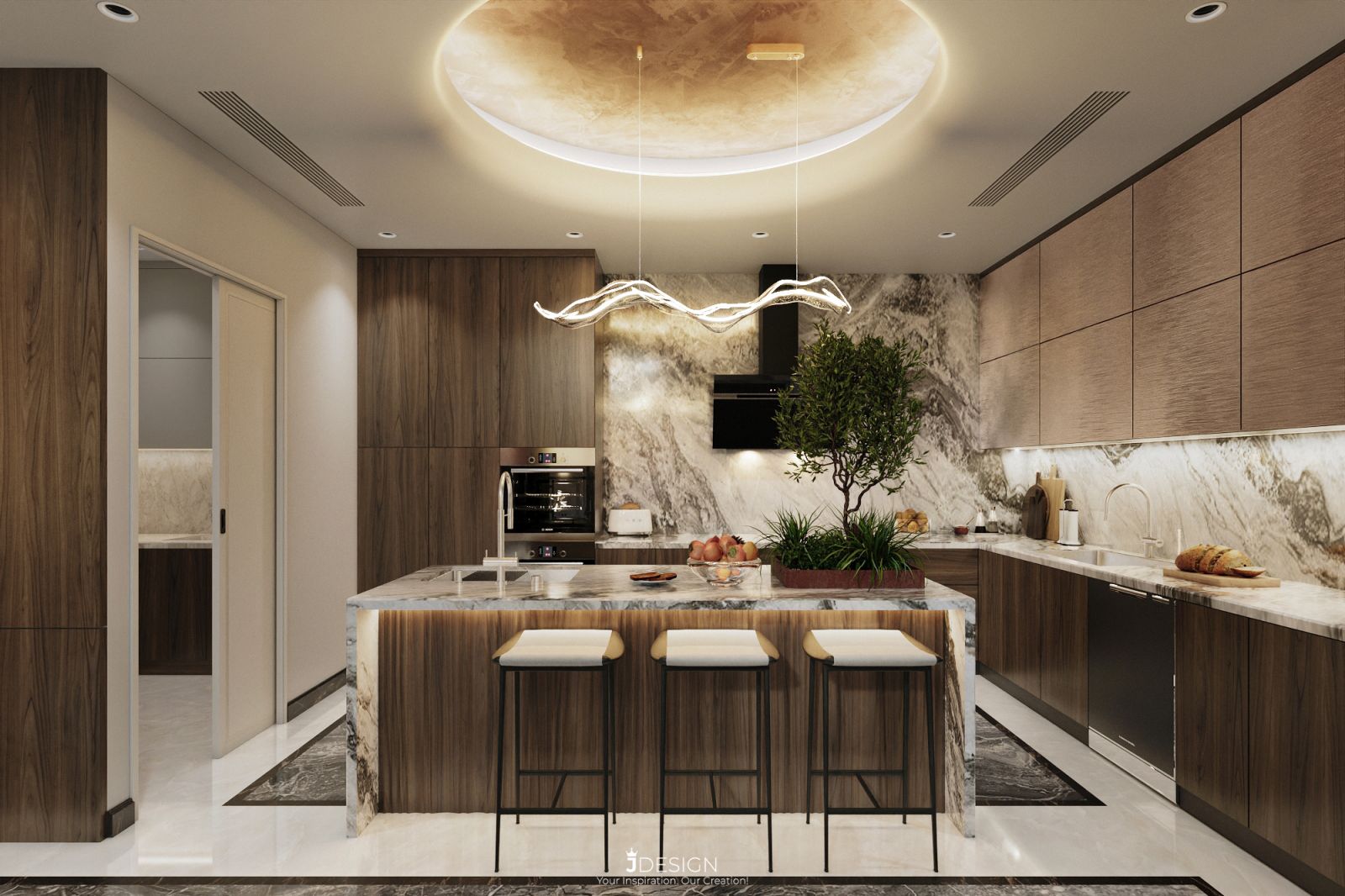
Decorative plaster ceiling in residential interior space

Decorative plaster ceiling in Commercial and Service space
B. Classification by material properties:
1. Moisture-proof plaster ceiling:
- Characteristics: Gypsum board is resistant to mold and is often used in areas with high humidity.
- Application:
+ These spaces have high humidity, so it is necessary to use moisture-proof ceilings to avoid mold, ensure durability and cleanliness.
+ Storage areas in high humidity environments also need to use moisture-proof ceilings to protect the structure.
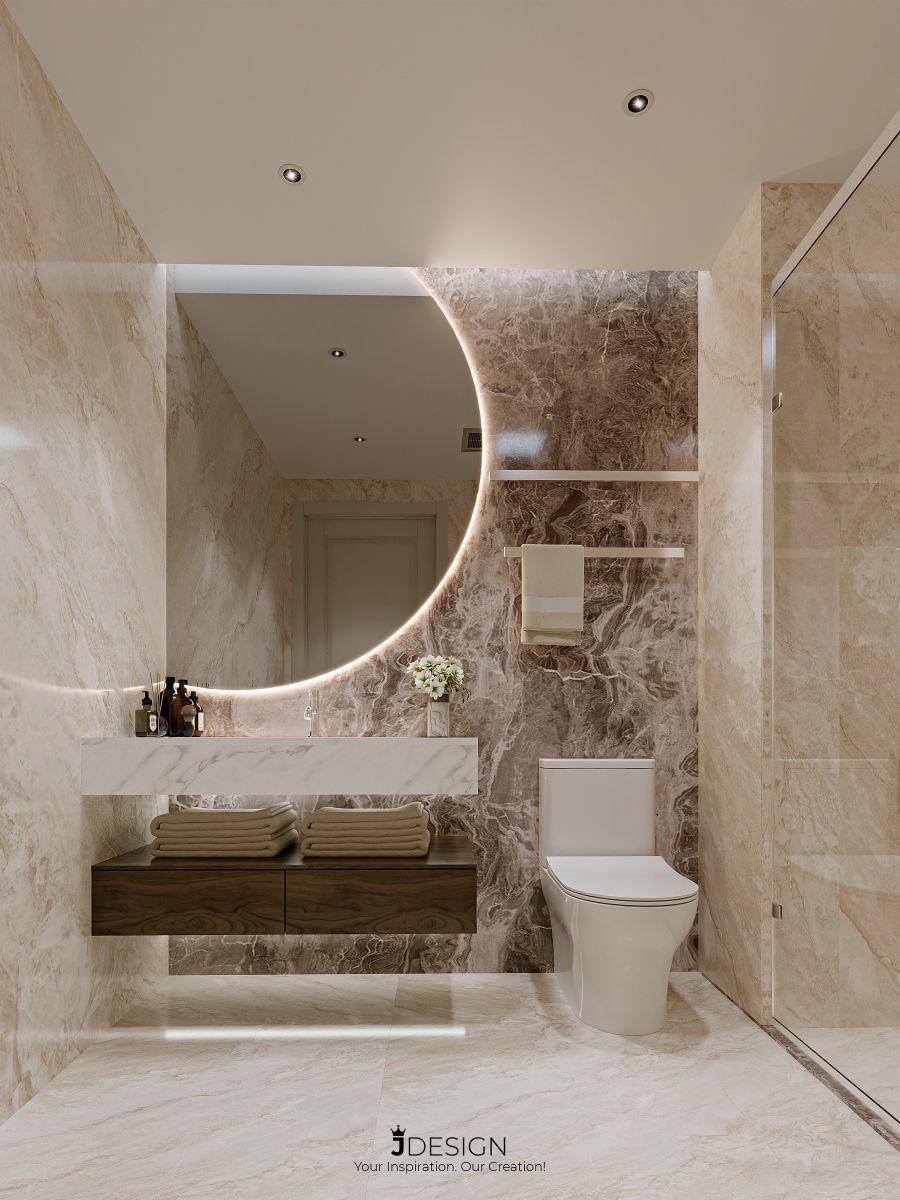
2. Fireproof plaster ceiling
- Features: Gypsum board has high heat resistance and effective fire resistance.
- Application:
+ Ensure fire safety for projects with high requirements and regulations on fire prevention and fighting
+ Especially in buildings with high risk of fire and explosion, fireproof ceilings will help limit the spread of fire.
+ Safety must be ensured in crowded spaces and areas with many electrical devices.
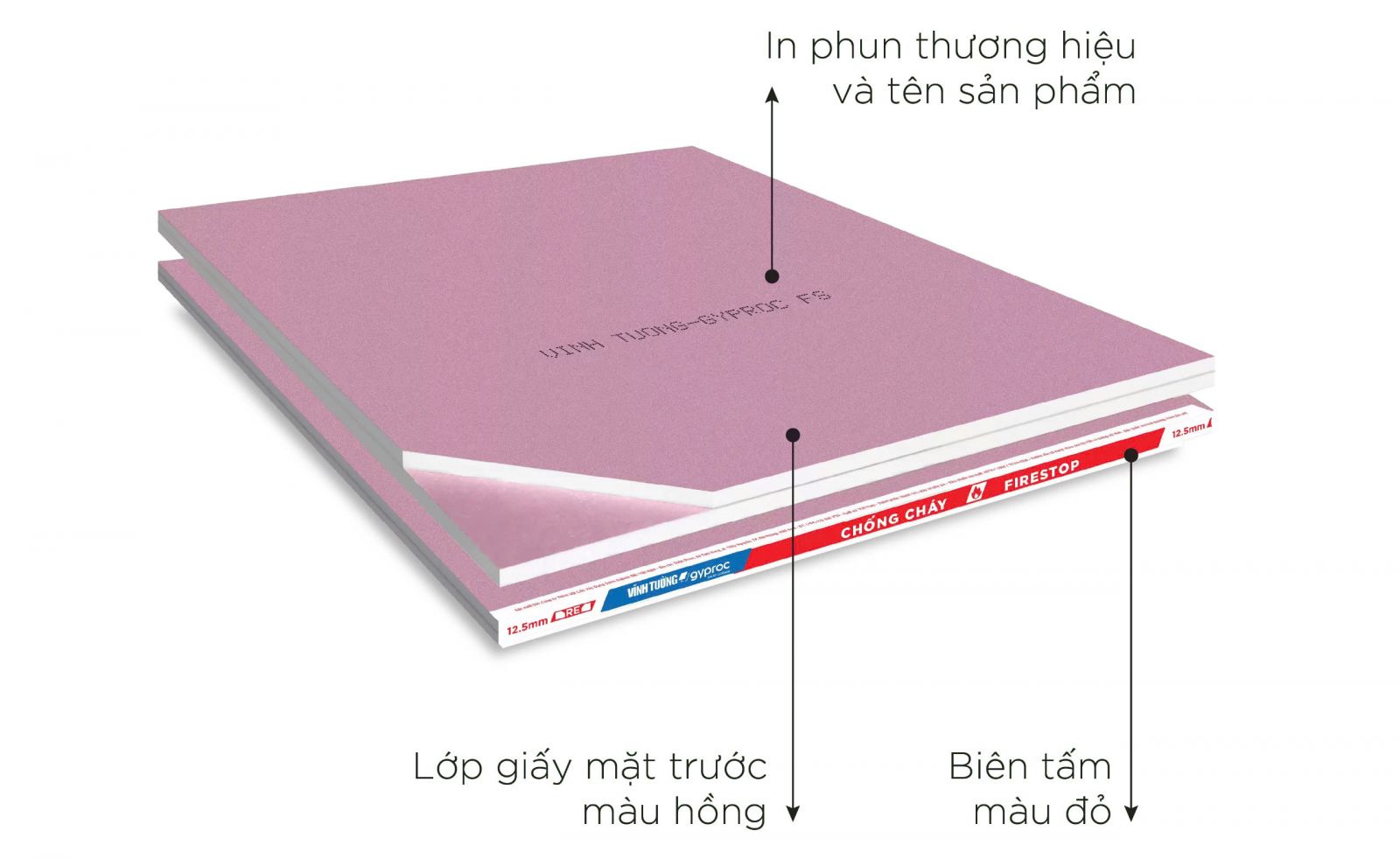
3. Sound-absorbing, antibacterial plaster ceiling:
- Characteristics: Sound-absorbing plasterboard has good sound absorption ability, minimizing noise from outside or noise between rooms.
- Application:
+ Good sound insulation helps the sound to be clear and not affected by outside noise.
+ Ensure quiet space for resting or working activities.
+ Need to minimize outside noise to create a comfortable space for customers.
+ Suitable for projects with high requirements for antibacterial factors in interior spaces such as Hospitals, Clinics, Operating Rooms, Medical Technical Rooms, ...
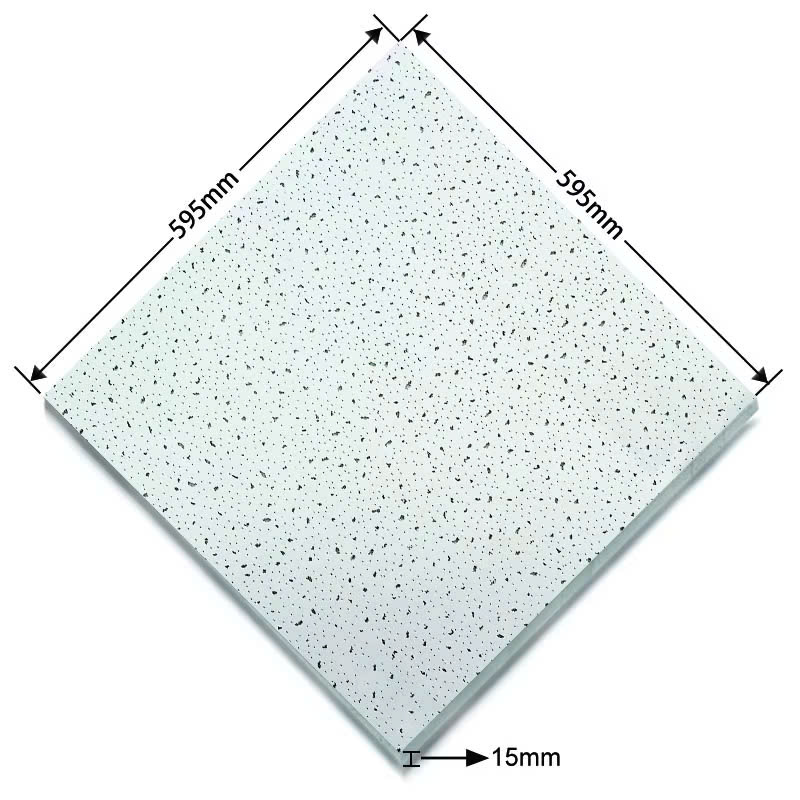
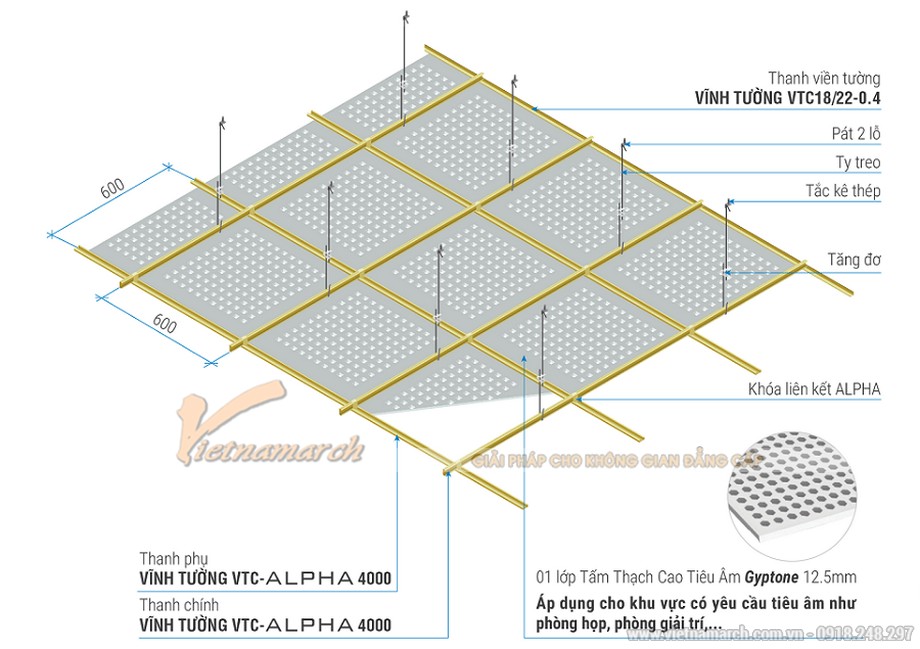
VI. Some Outstanding Brands of popular Gypsum Ceiling System materials:

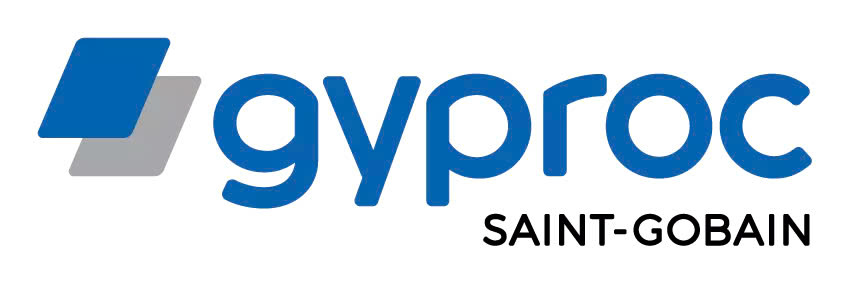


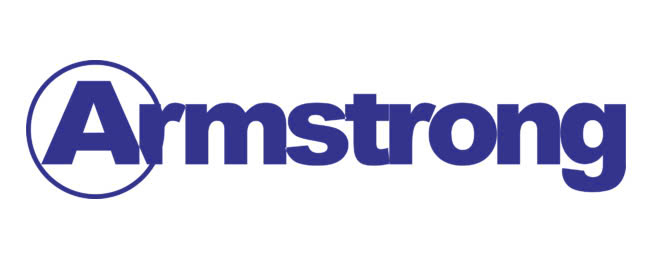
VII. Summary
SUMMARY OF GYPSUM CEILINGS
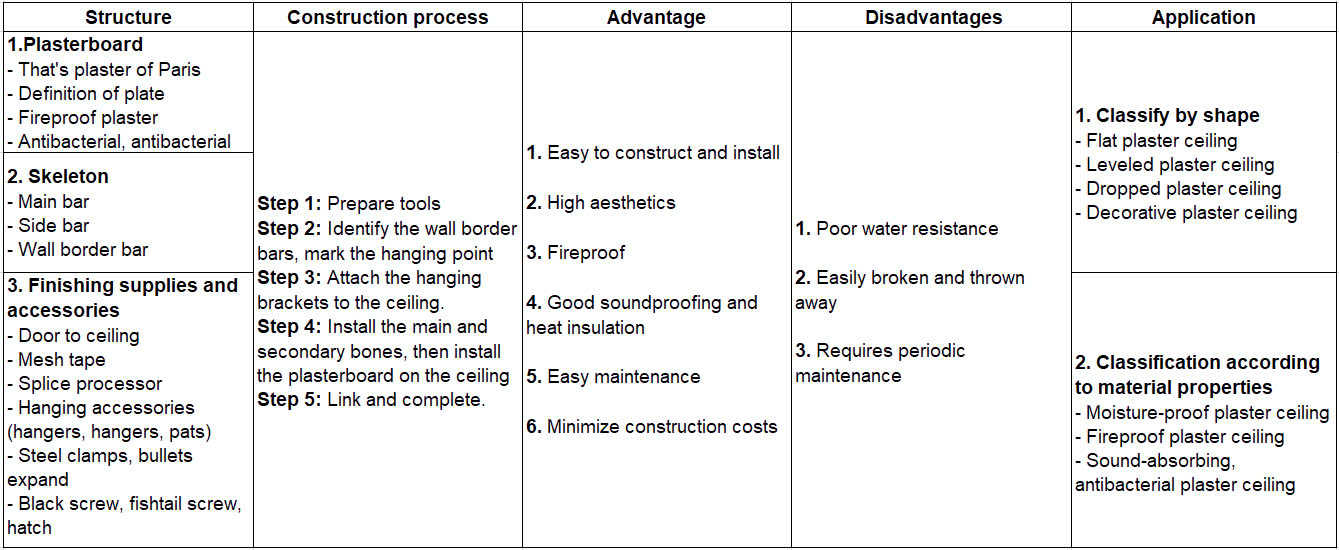
In conclusion, Gypsum ceilings are the perfect solution for many projects, from residential to public, commercial and industrial projects. Depending on the purpose of use and technical requirements, you can choose the appropriate type of gypsum ceiling to optimize space, ensure aesthetics and functionality. With many outstanding advantages such as flexibility, ease of construction, and sound absorption, antibacterial, fire resistance, gypsum ceilings have become a popular and smart choice for modern interior design and construction projects.
JDesign Co., LTD is proud of being a professional Interior Design and Construction Company. We are confident to always bring to our customers the complete Interior Design and Construction solution with the best designs and the latest trends, besides the quality of completing the Project with the most reasonable time. with the most economic cost, always accompanied by the condition of product maintenance support during and after the best project handover time to customers!
-----------------------------------------------------
JDesign Co., LTD - PROVIDE PACKAGE SOLUTION RELATED TO INTERIOR DESIGN AND CONSTRUCTION!
Contact us now to schedule a Free Consultation/Survey/Quote!
Product warranty up to 03 years – Commitment to product maintenance for life!
For more details please contact:
- Email: contact.jdesignvn@gmail.com
- Tel: (+84) 866.648.298
- Website: https://j-design.vn/
- Fanpage: https://www.facebook.com/jdesignvn
- Corporate Office: 03/50 Nguy Nhu Kon Tum, Nhan Chinh, Thanh Xuan, Ha Noi
JDesign - Your Inspiration. Our Creation!



